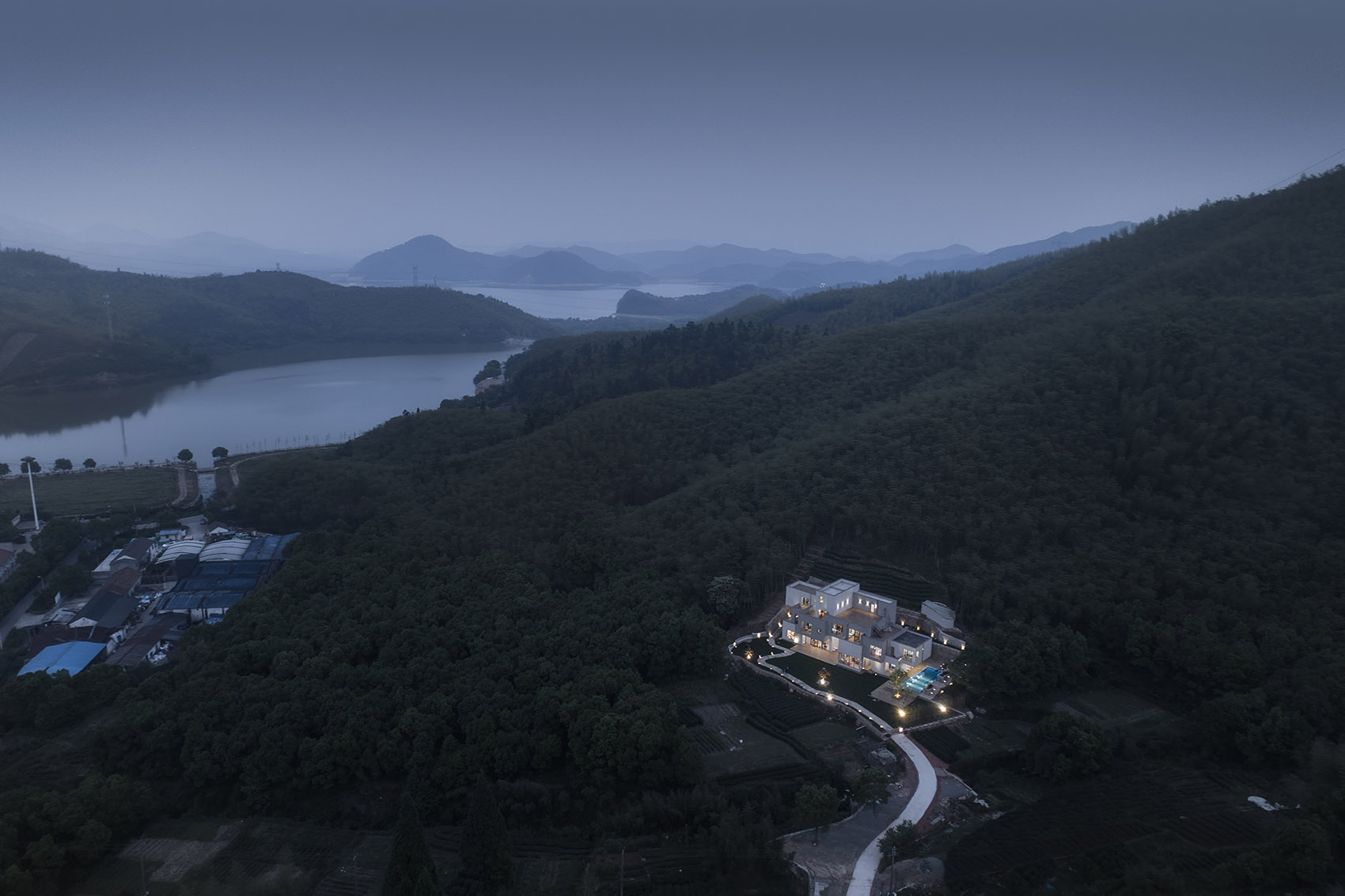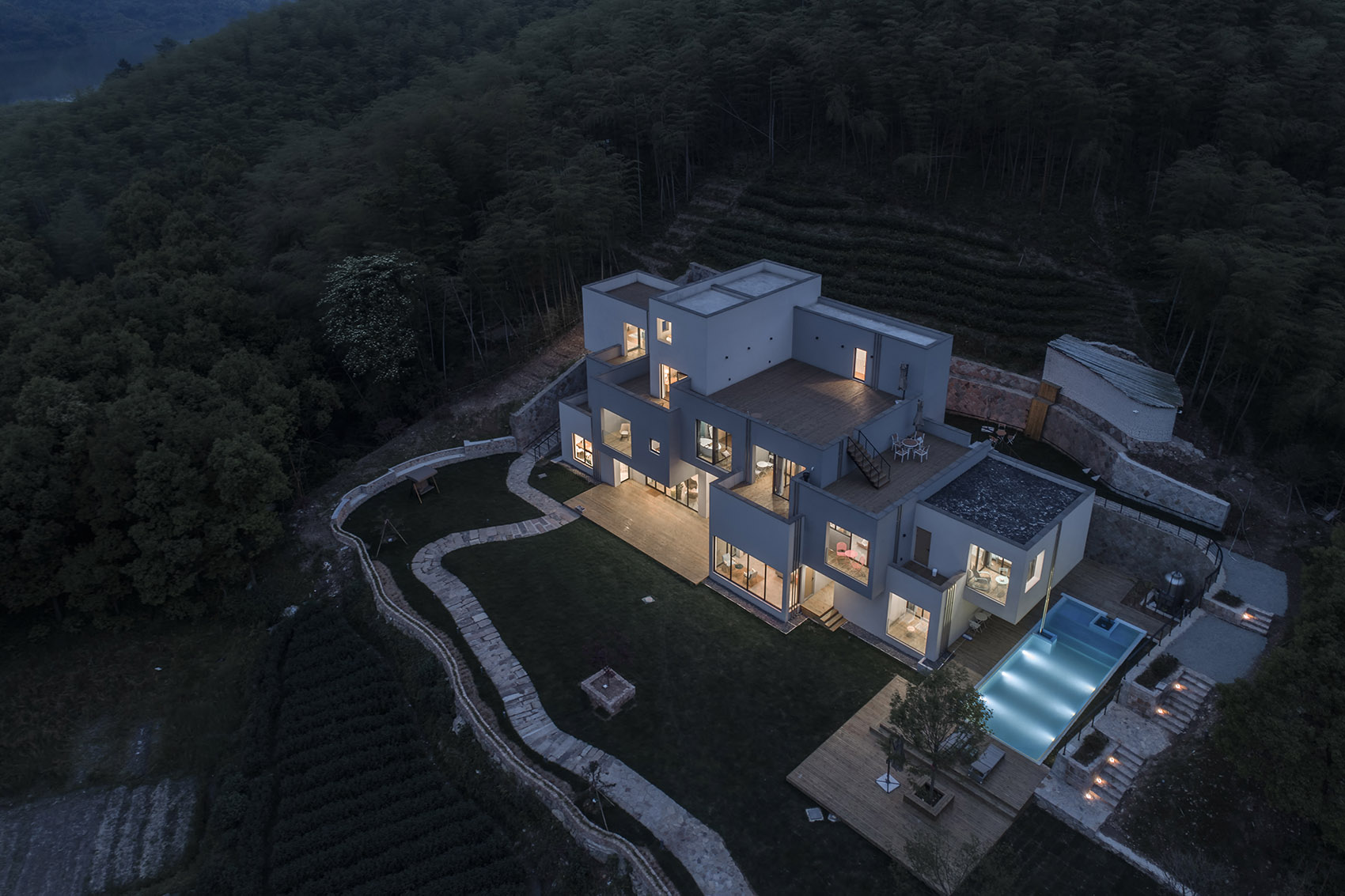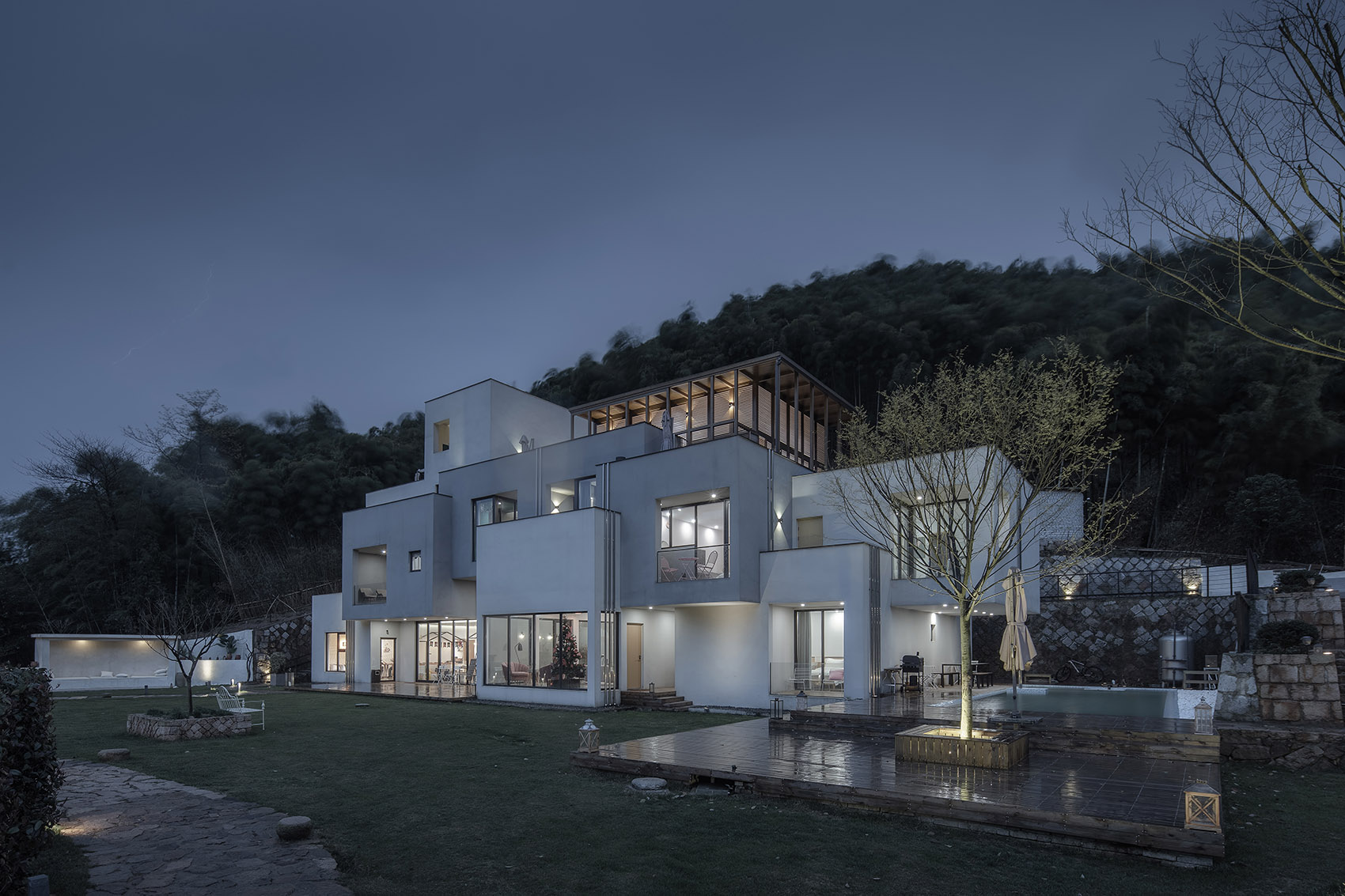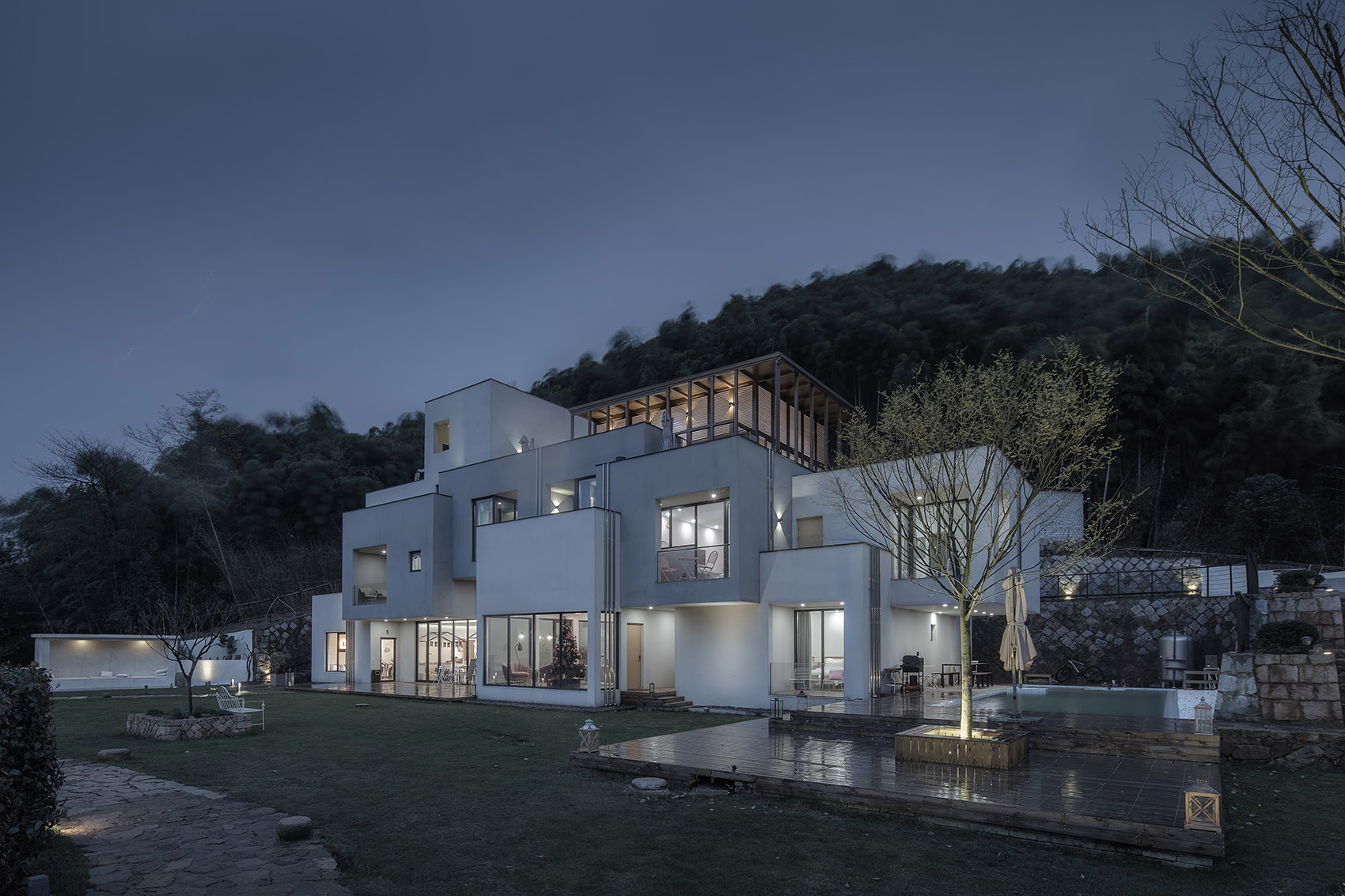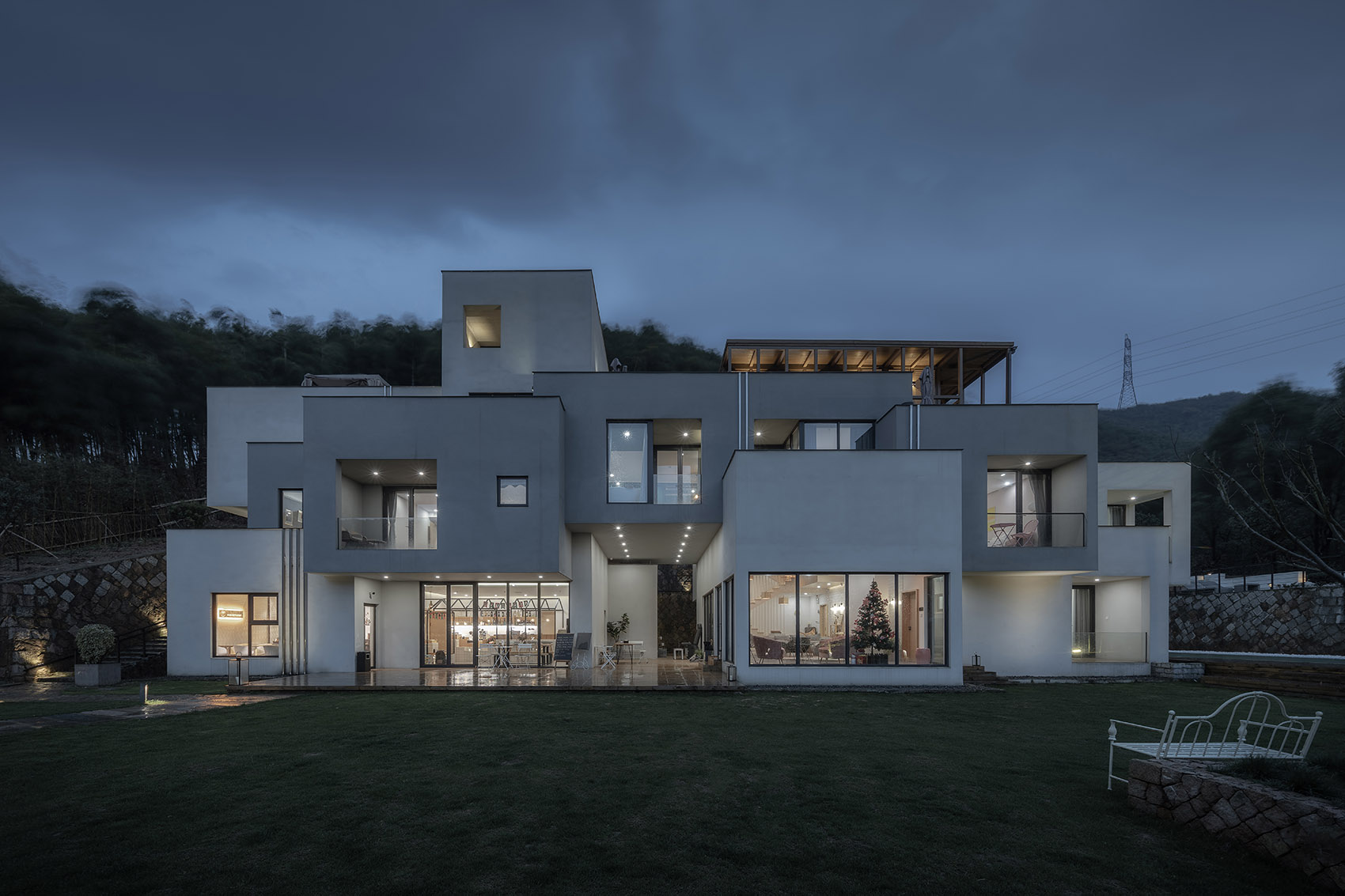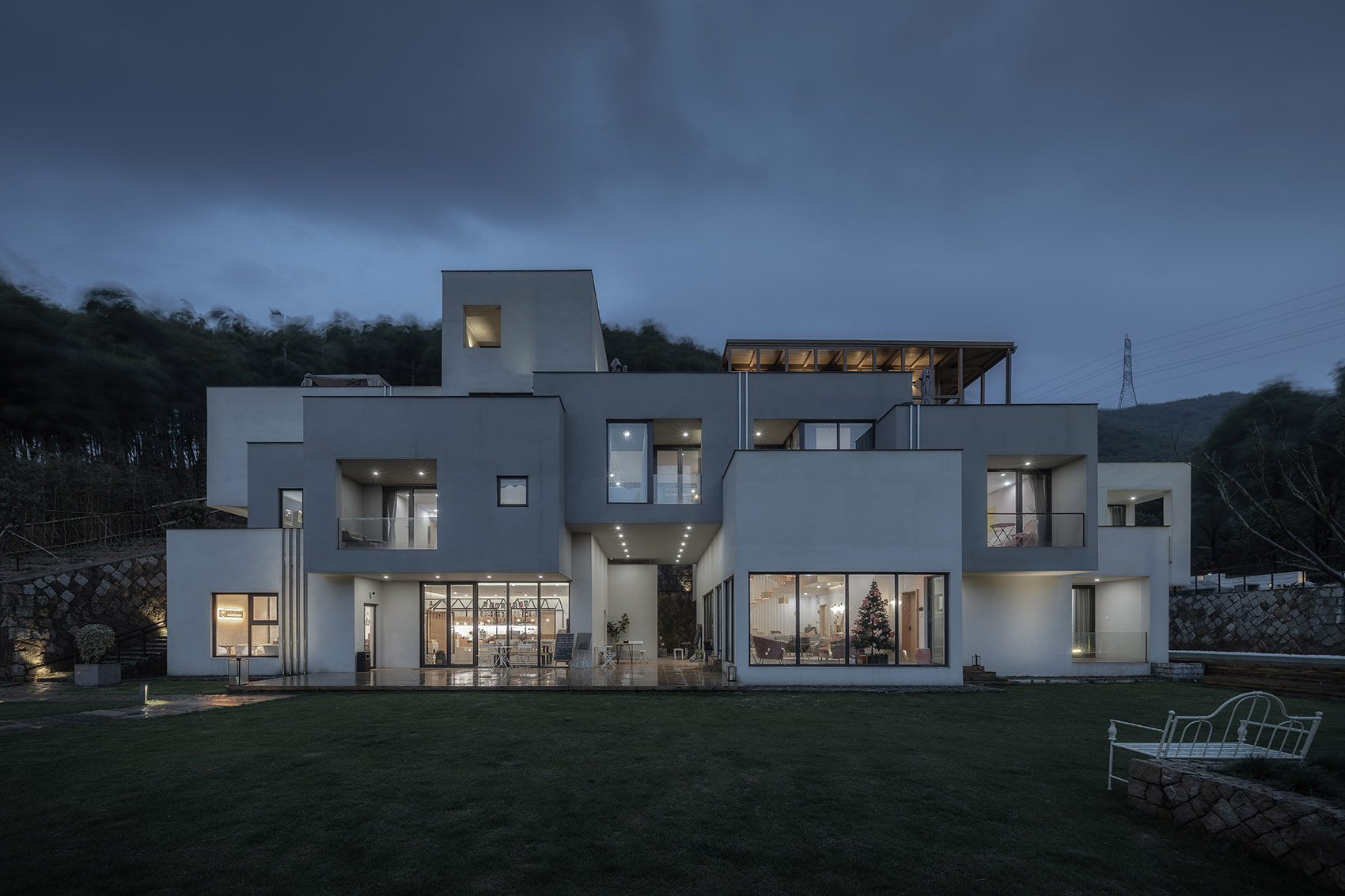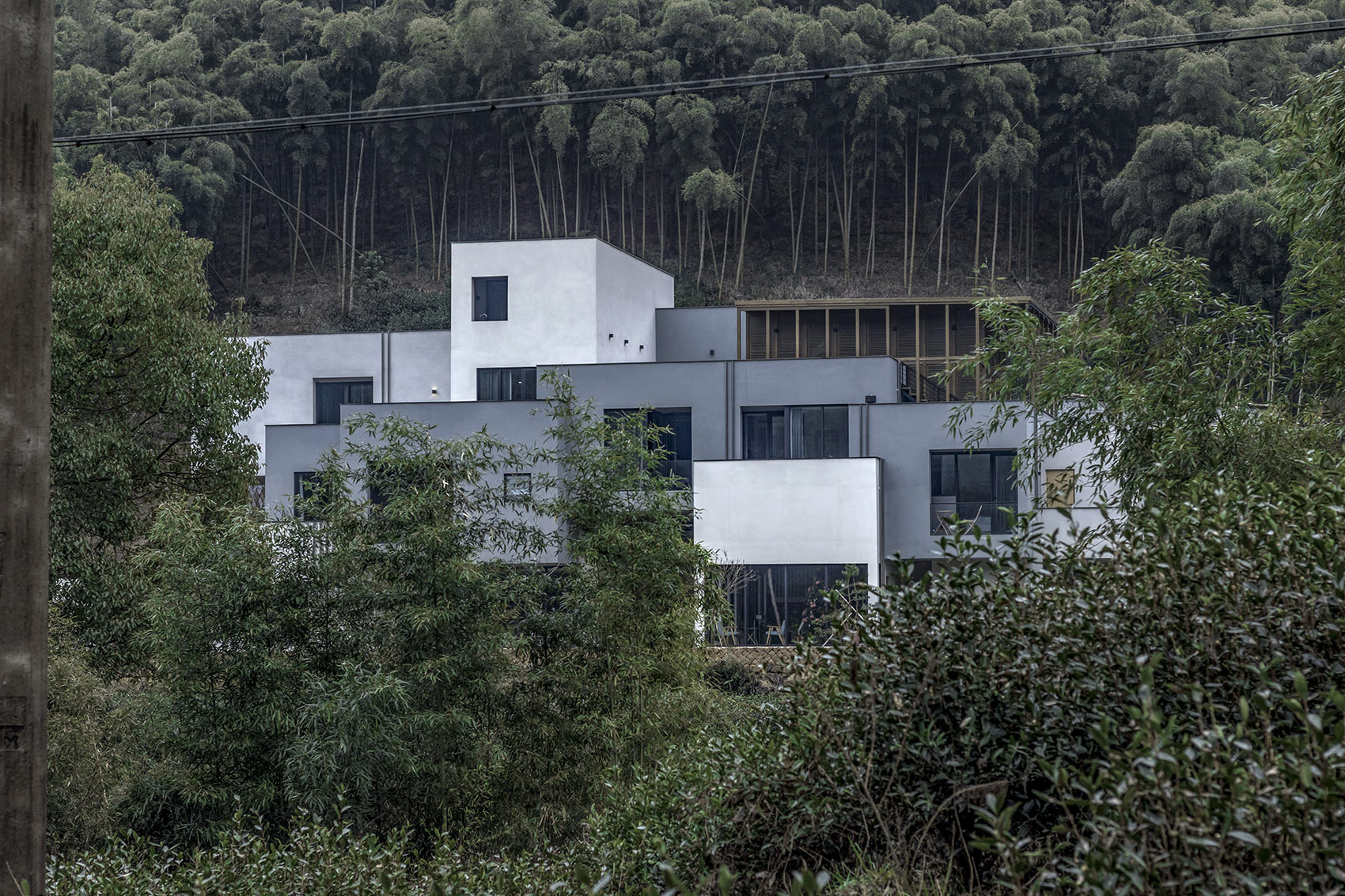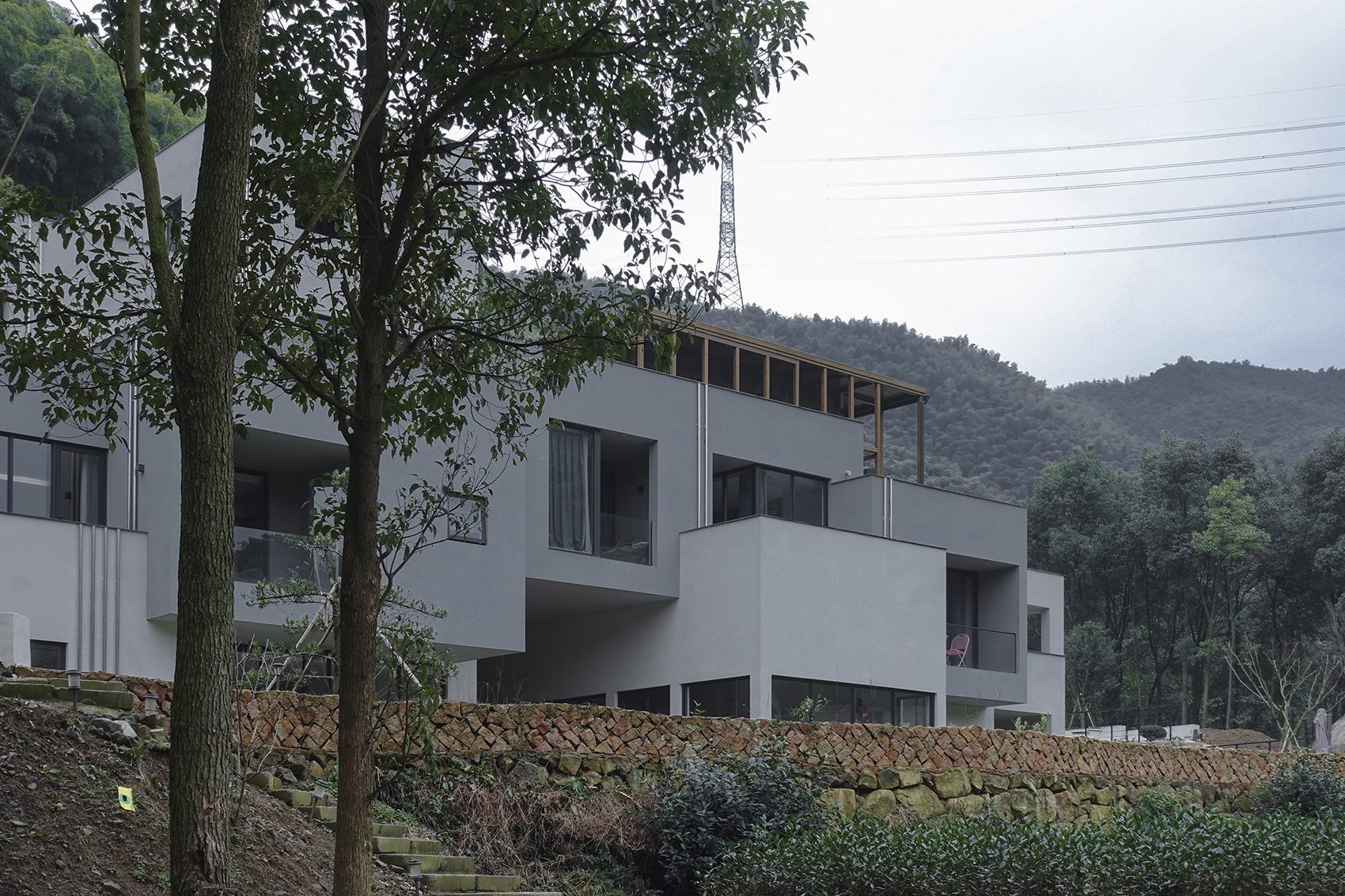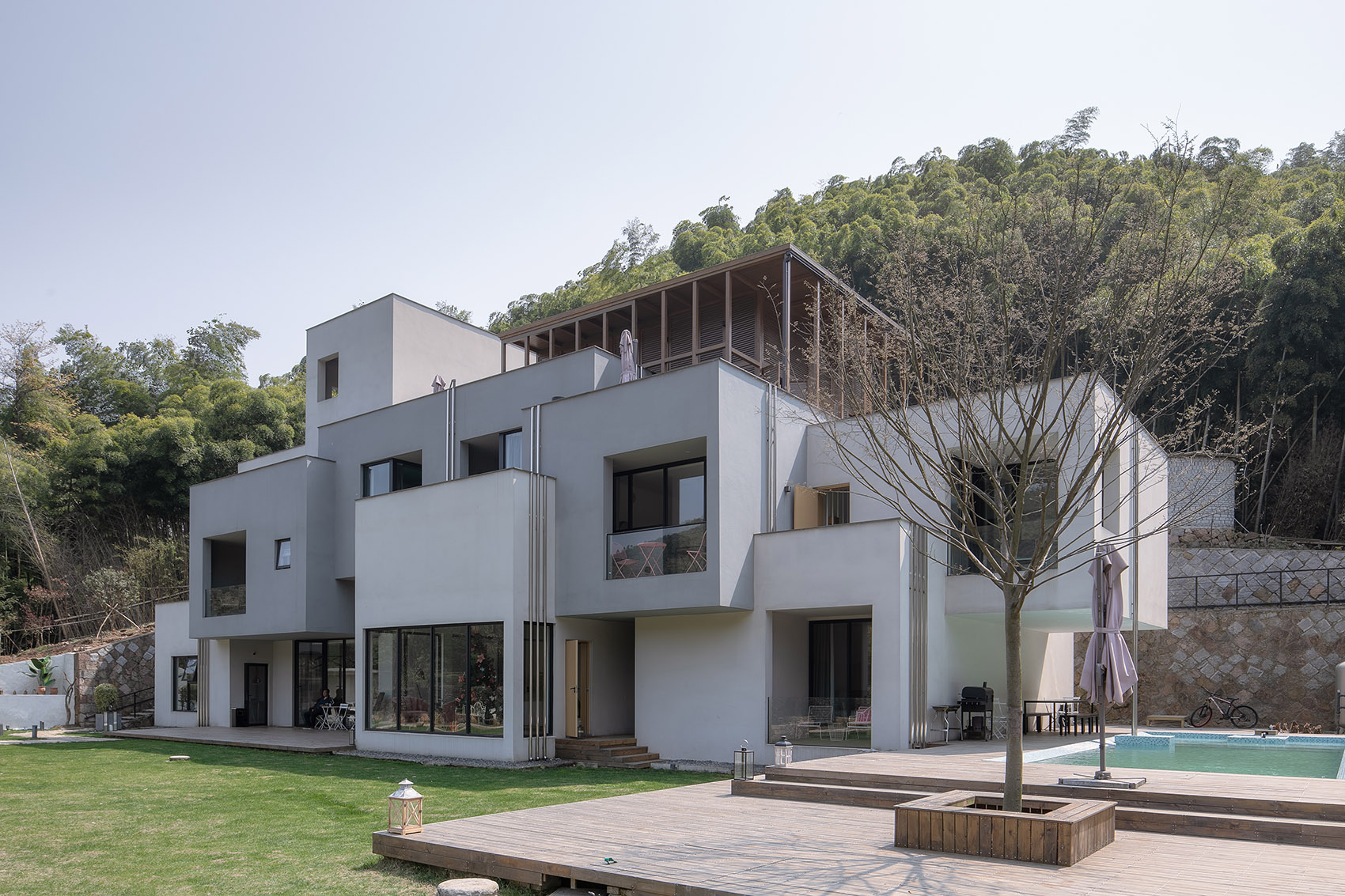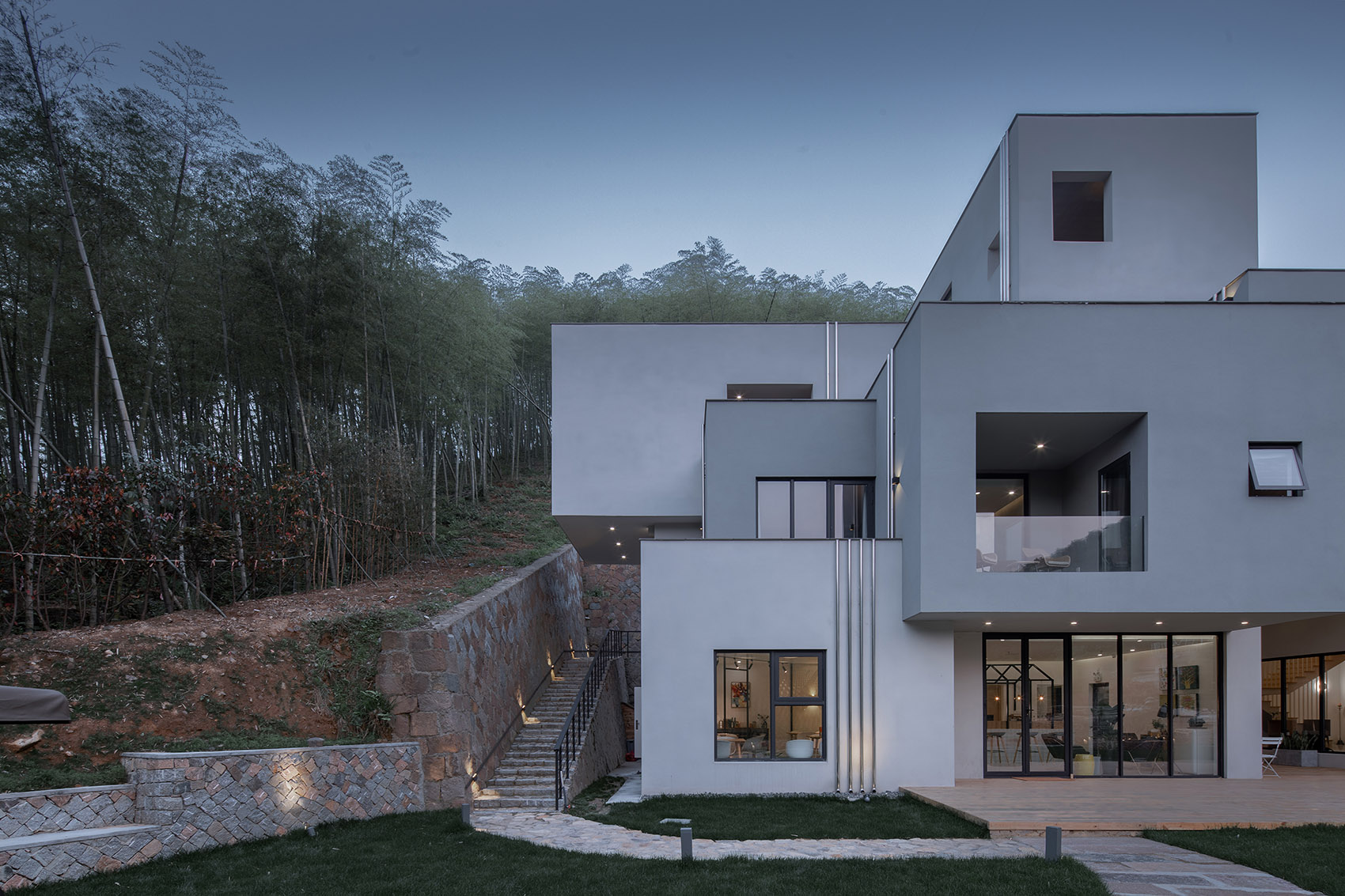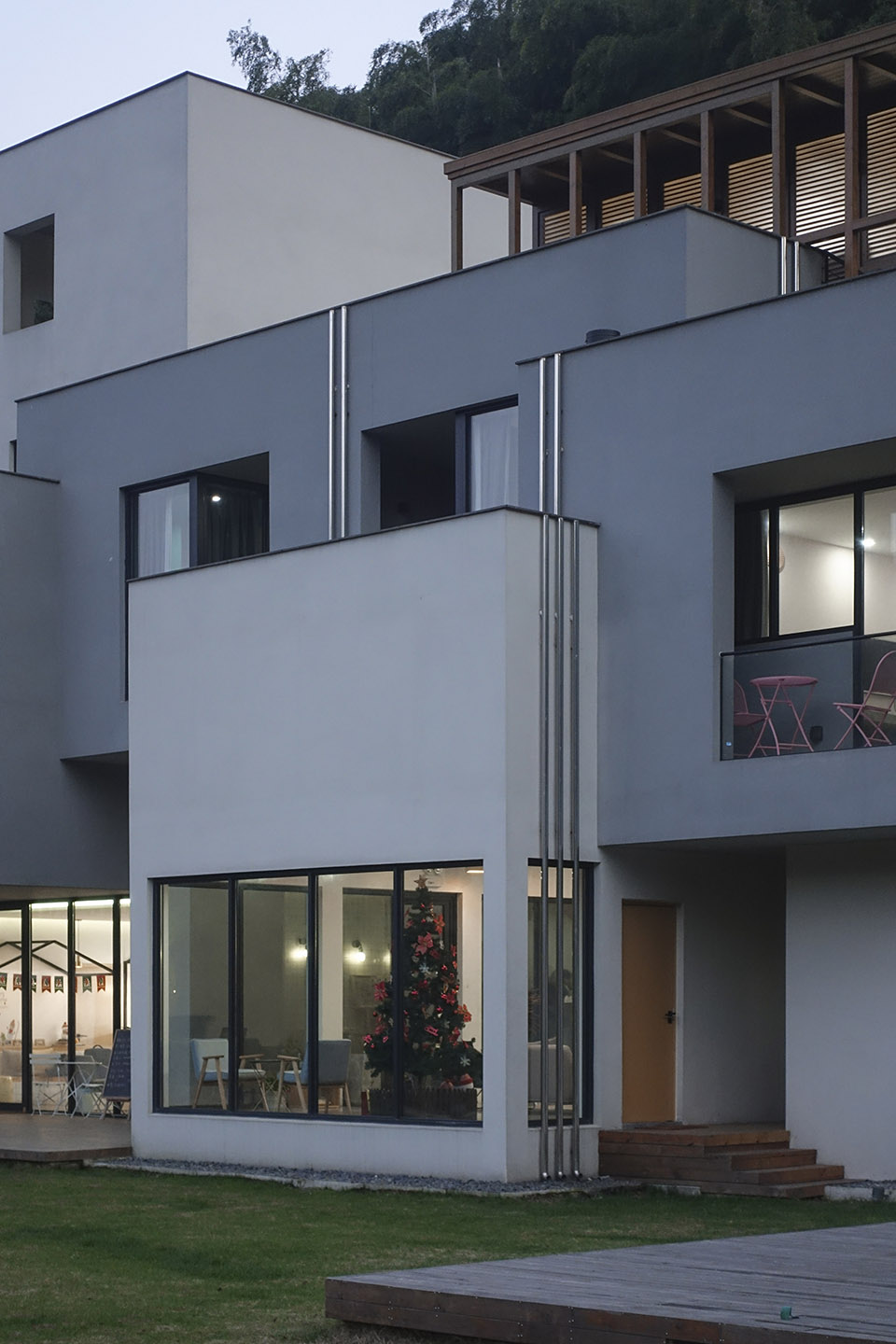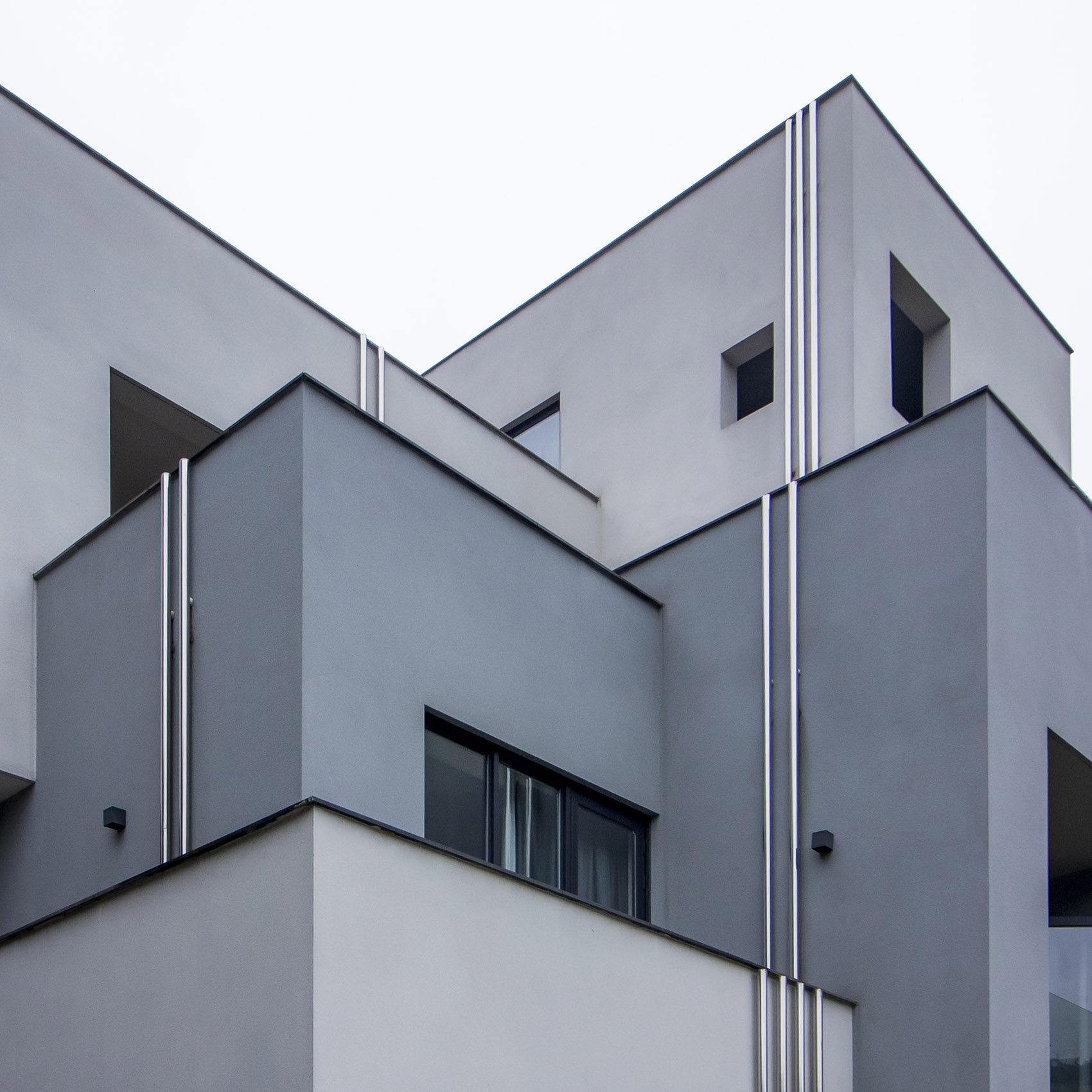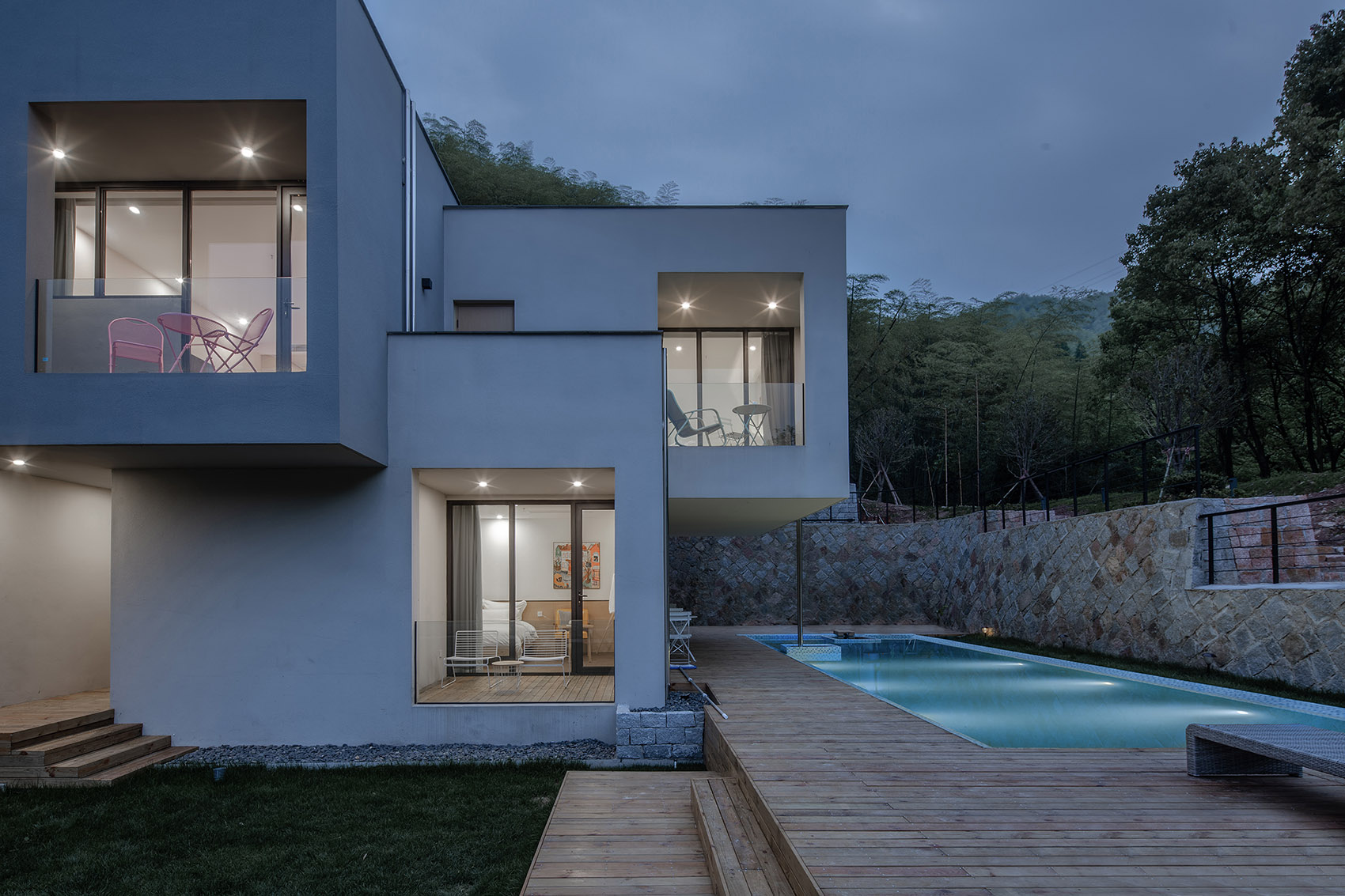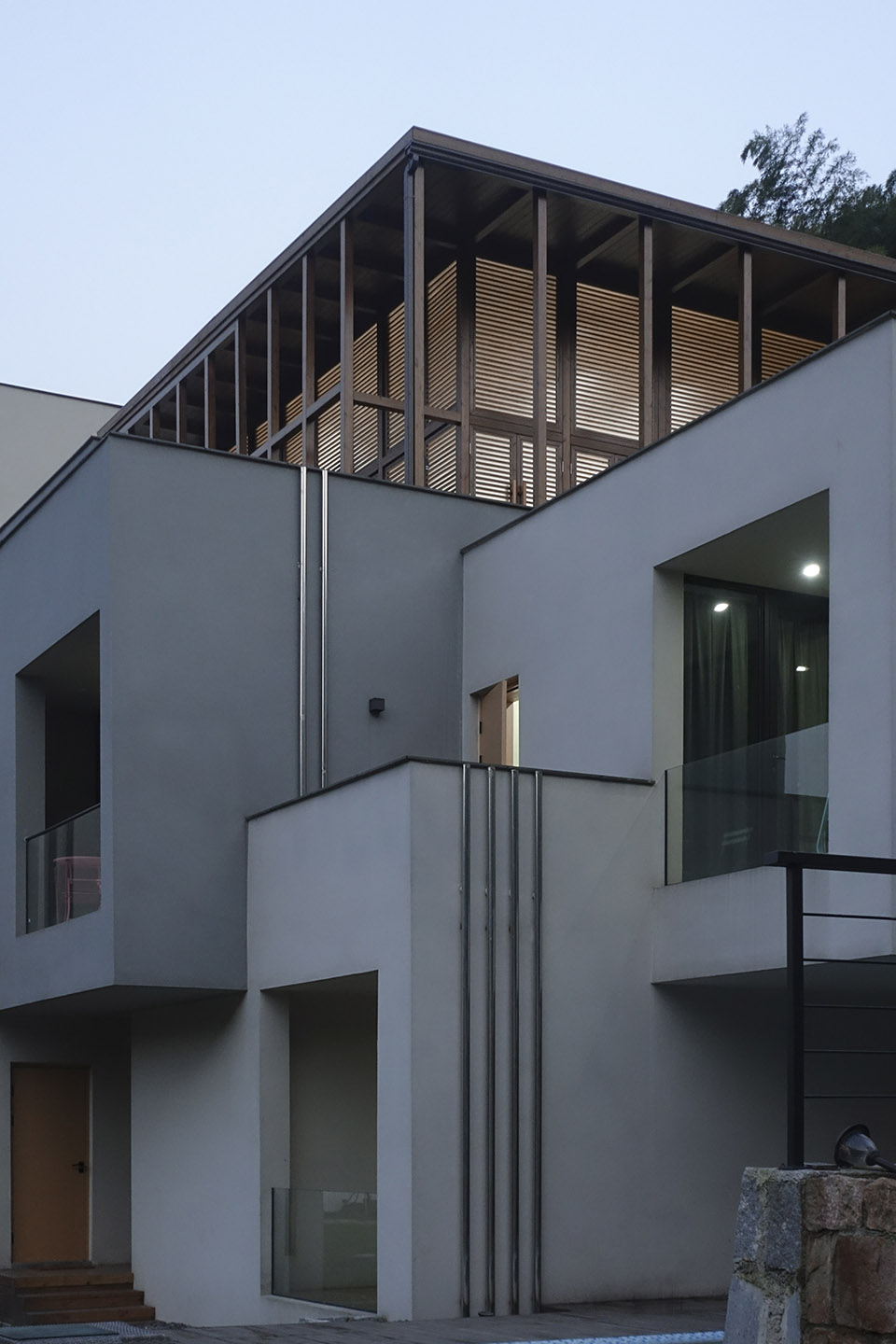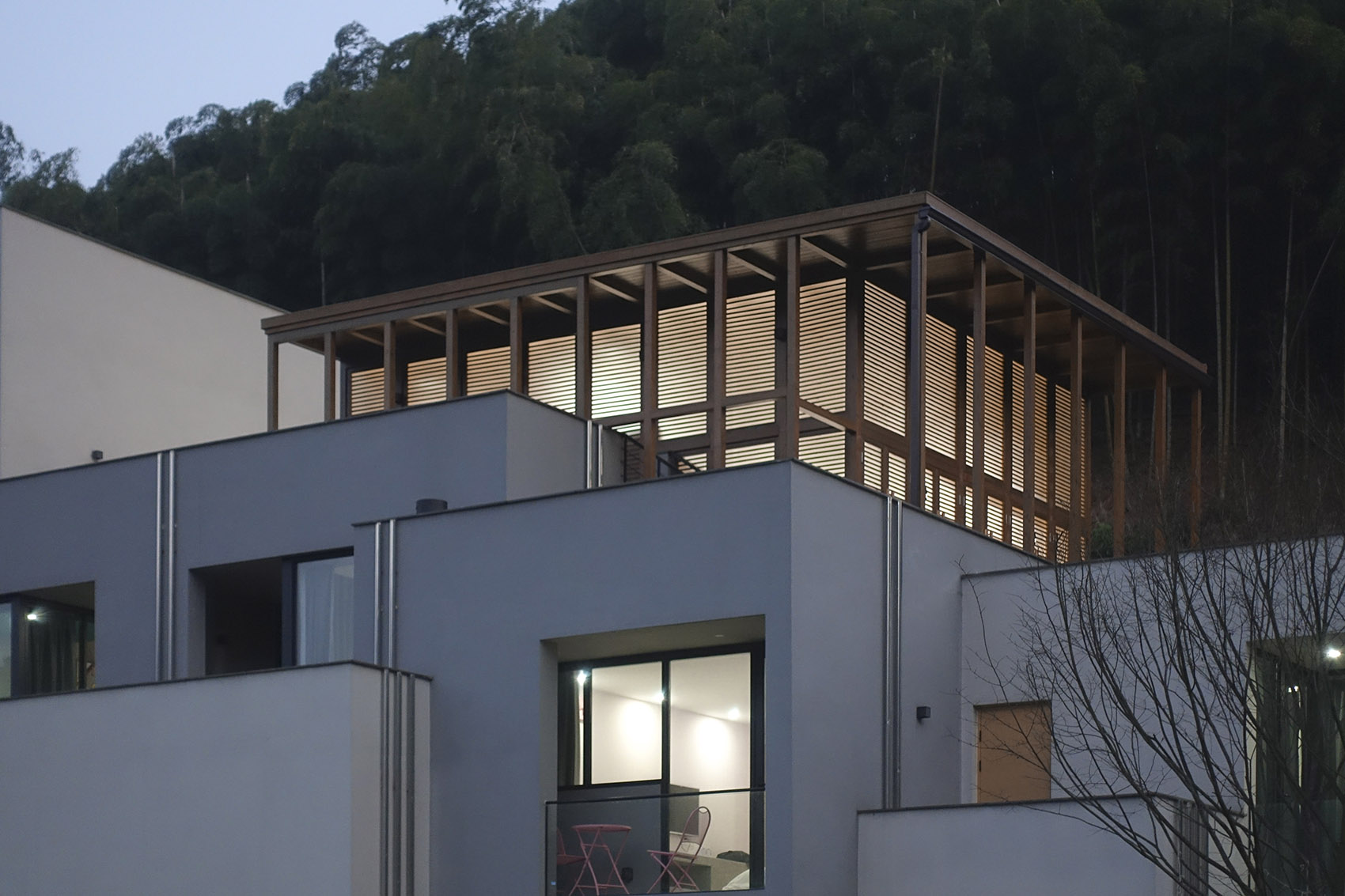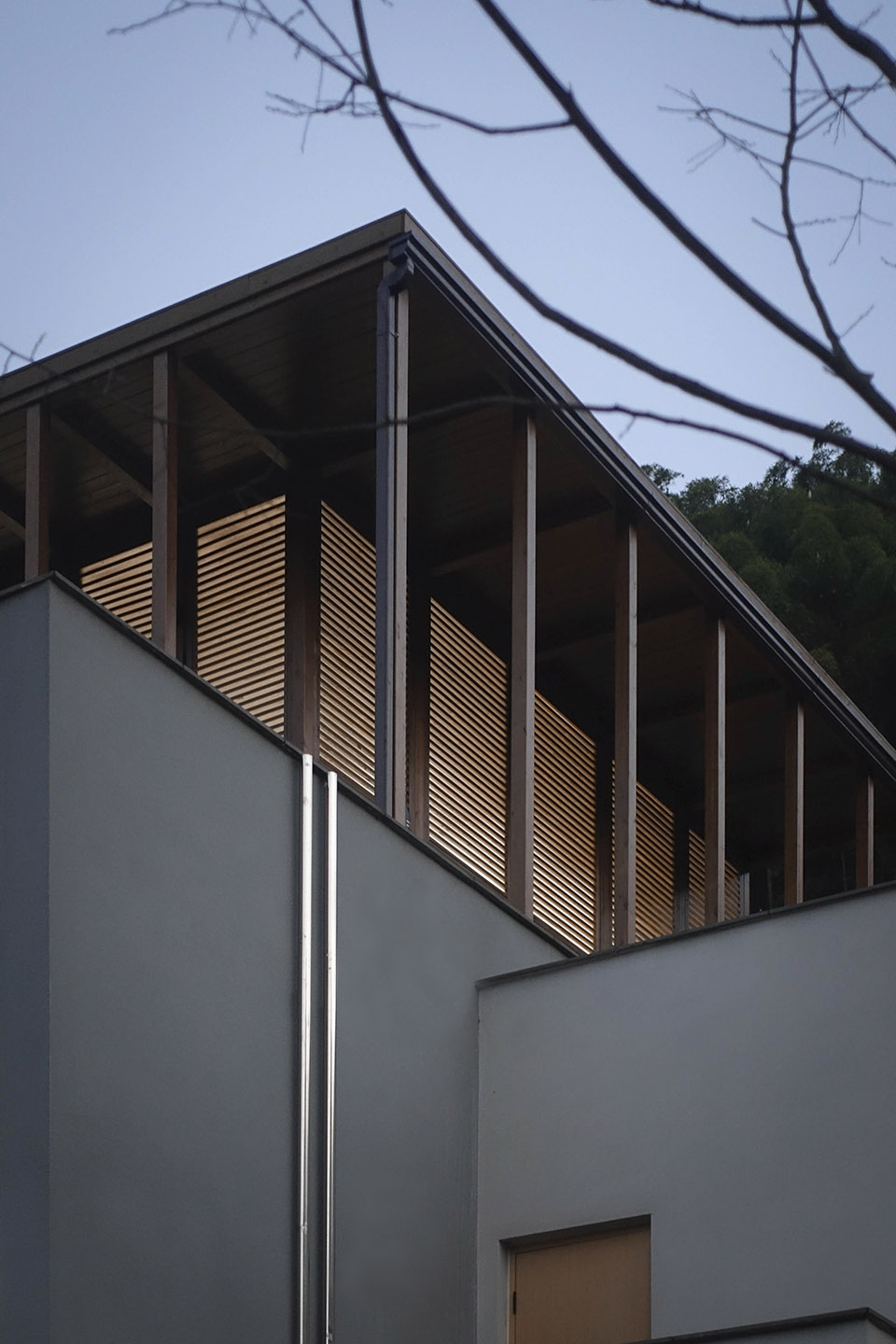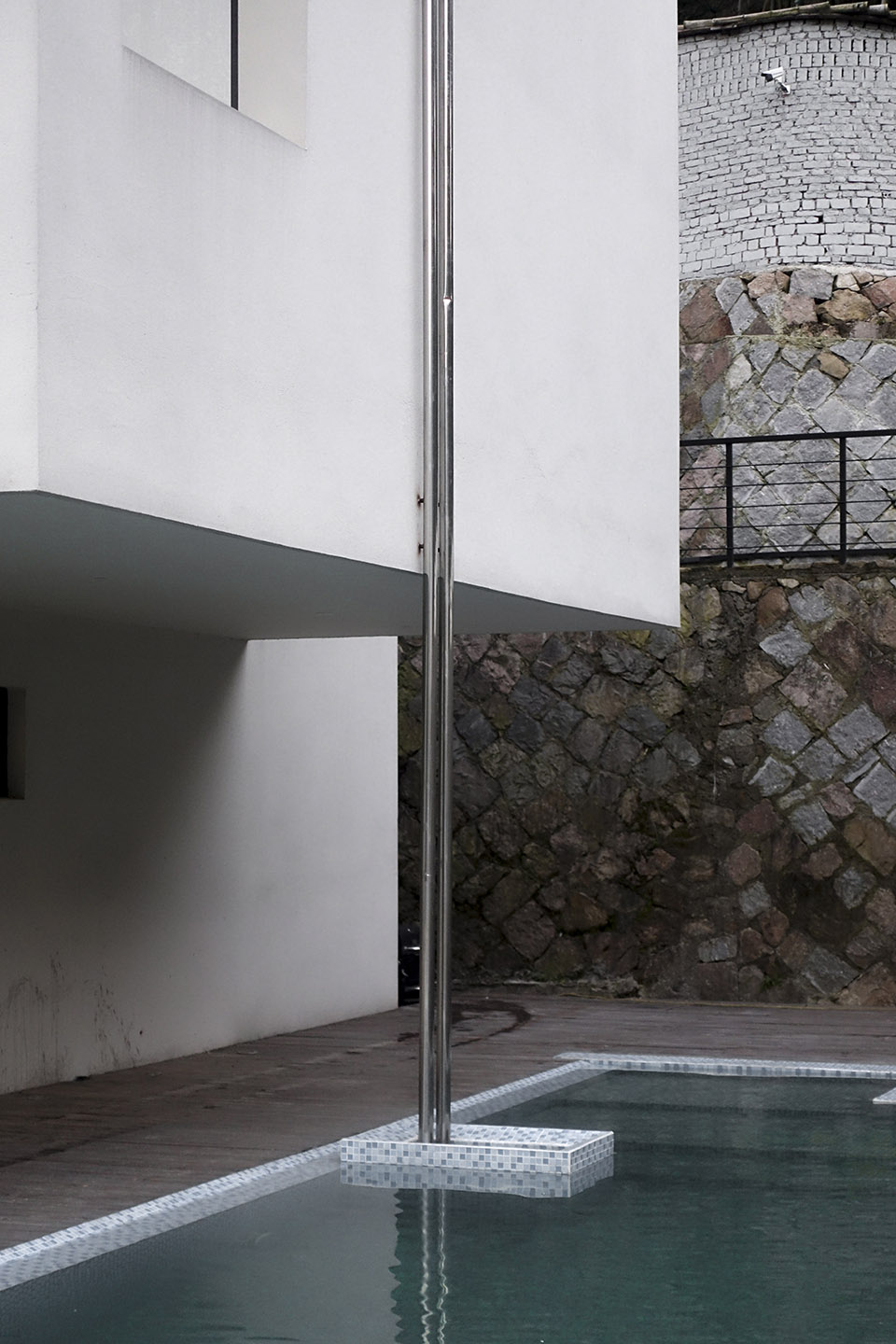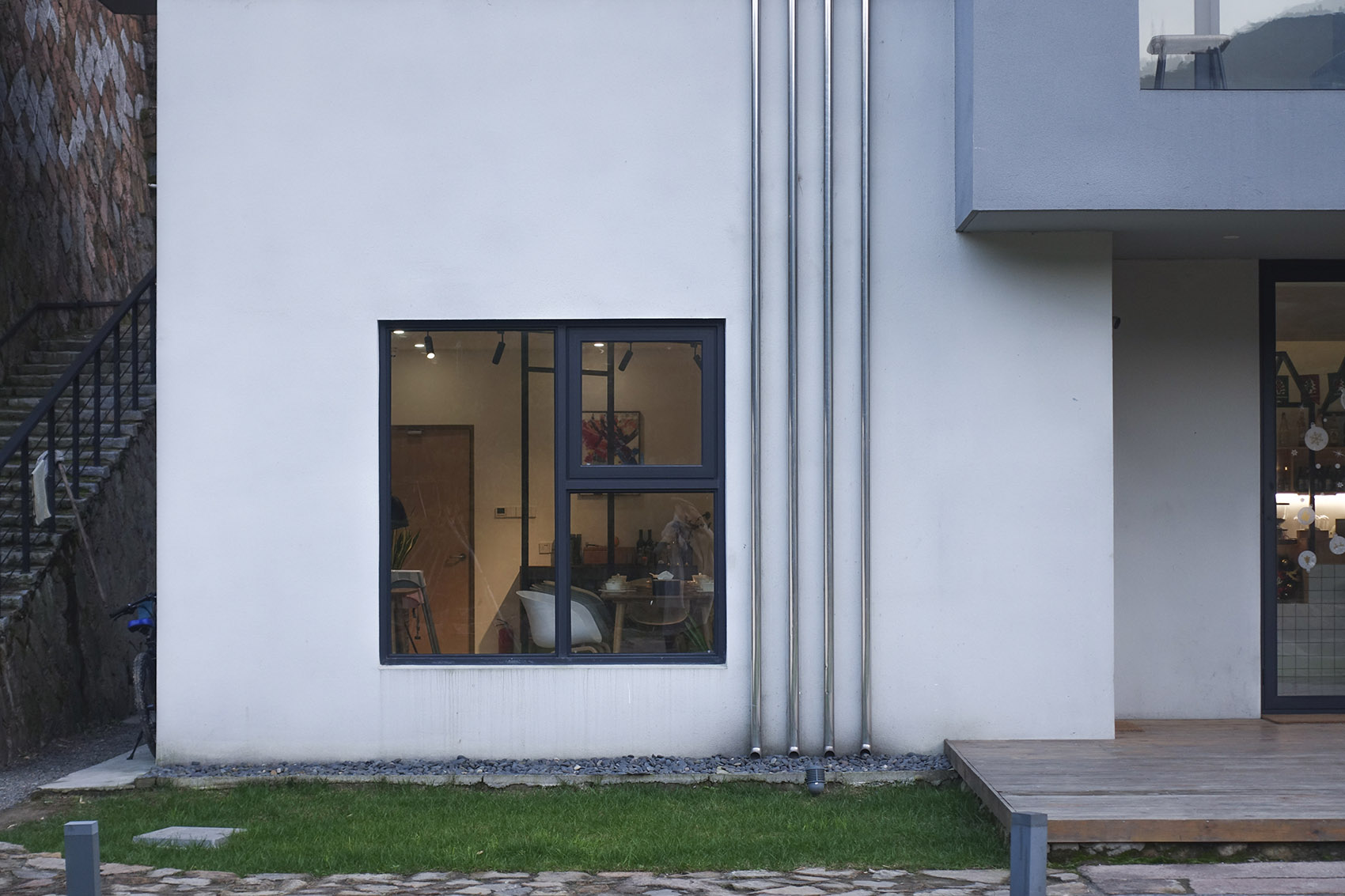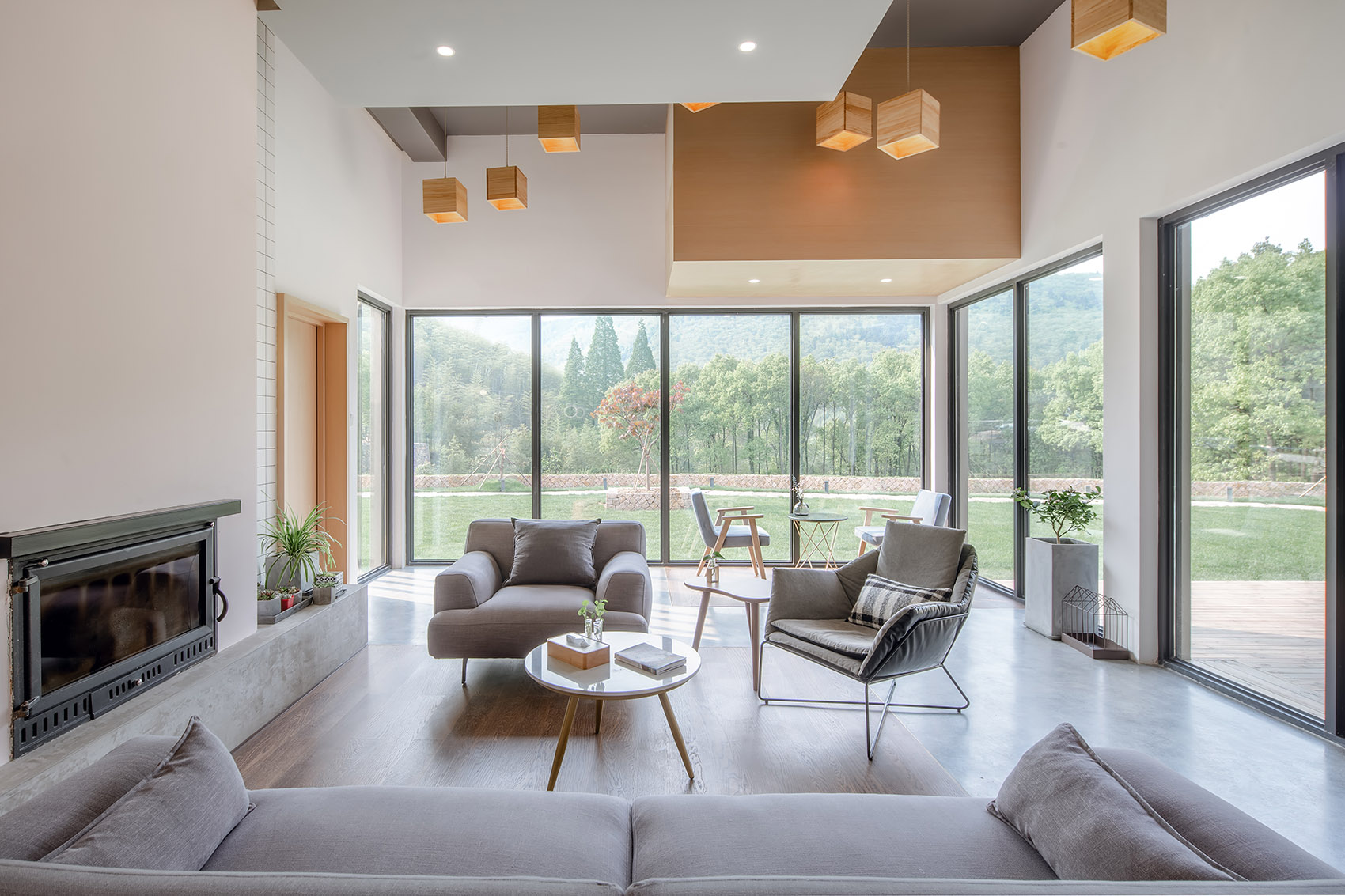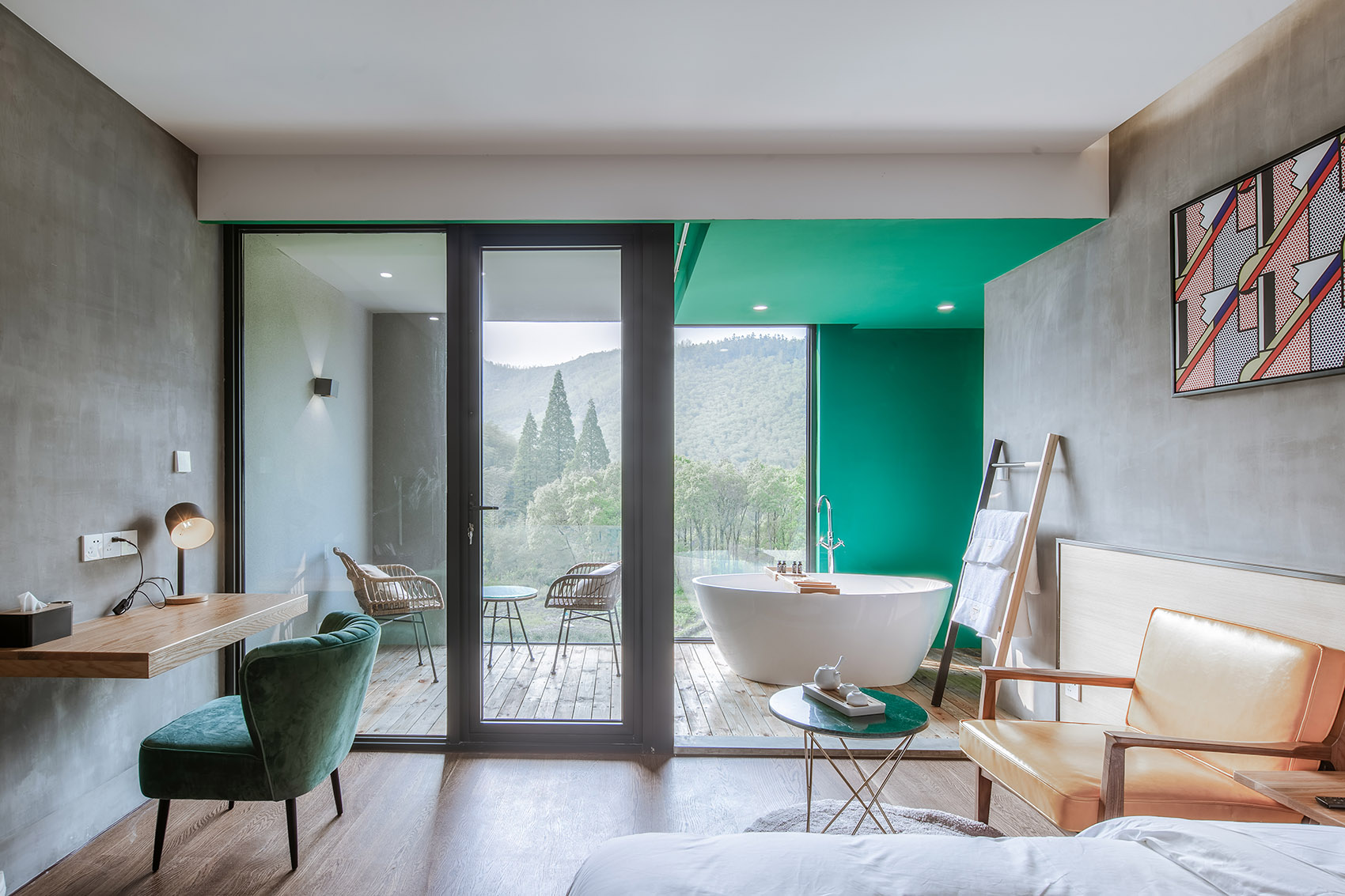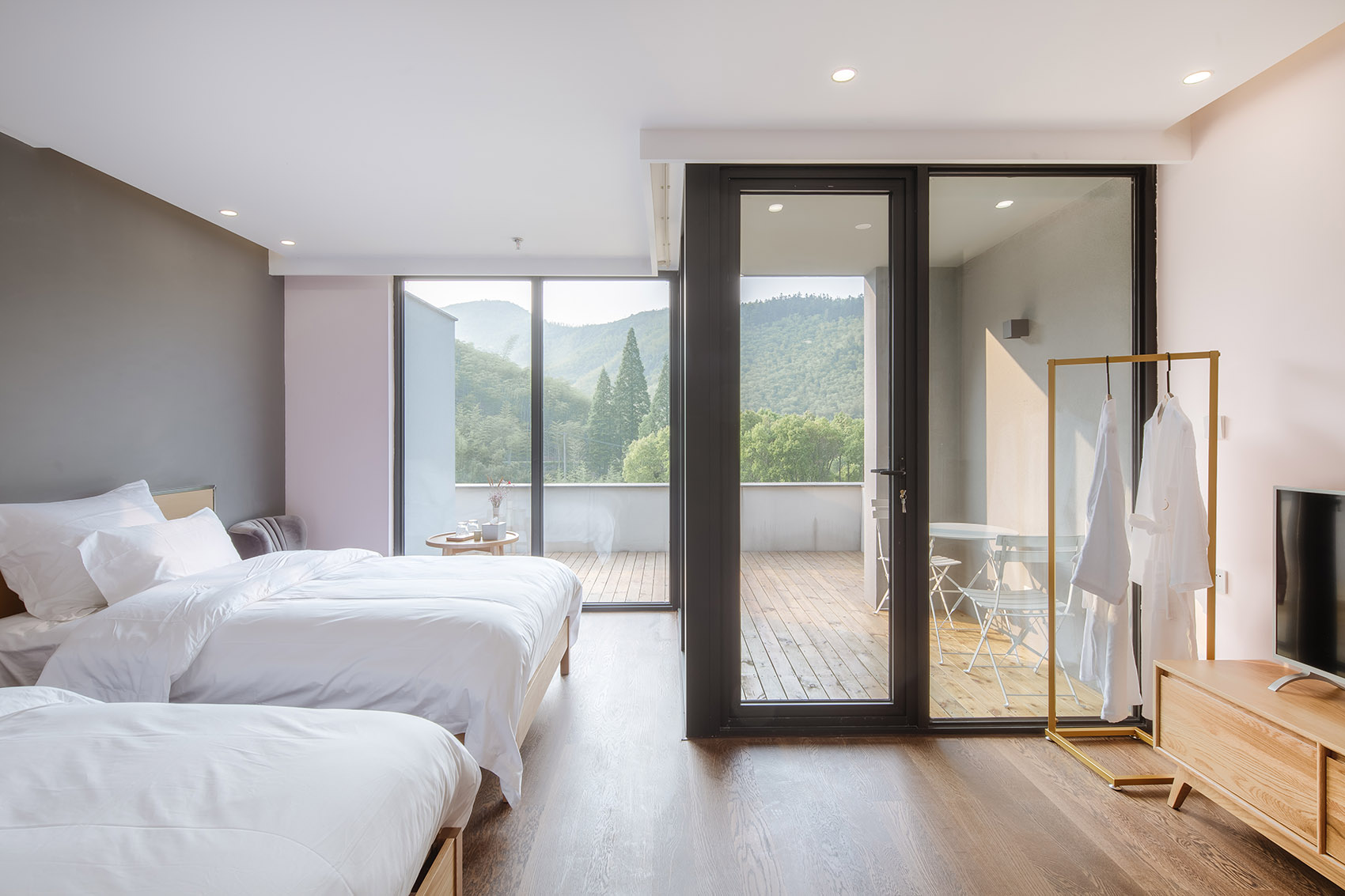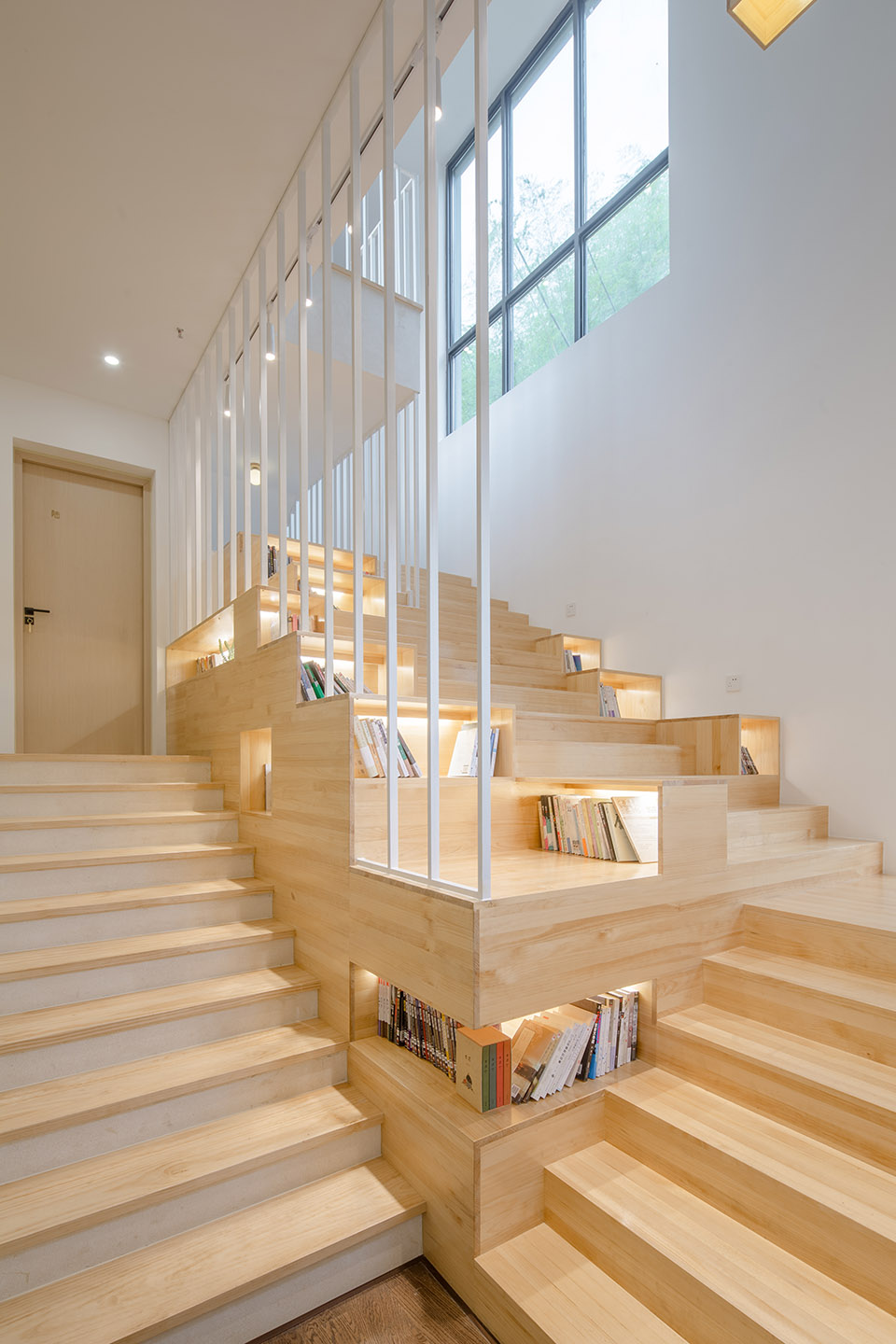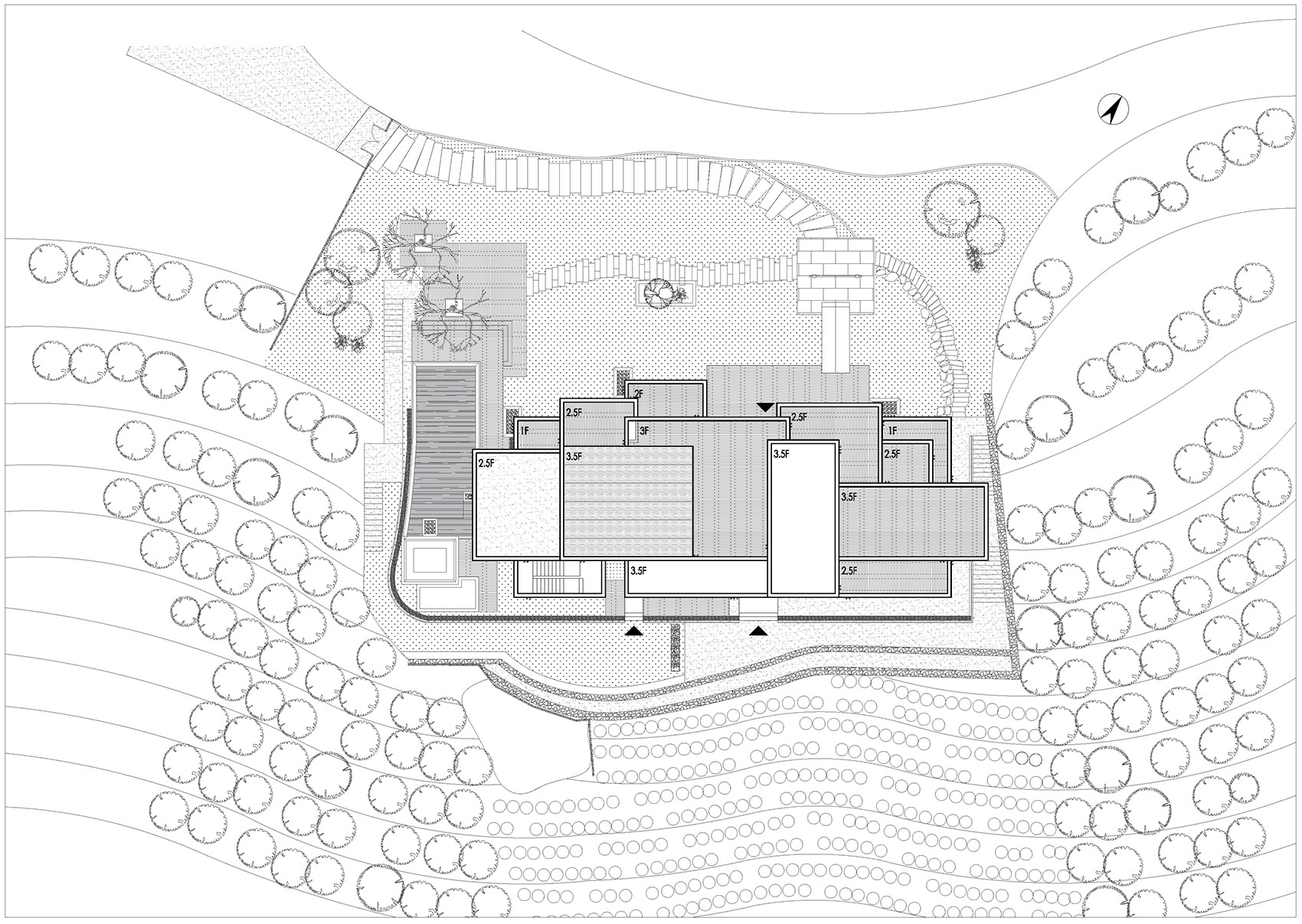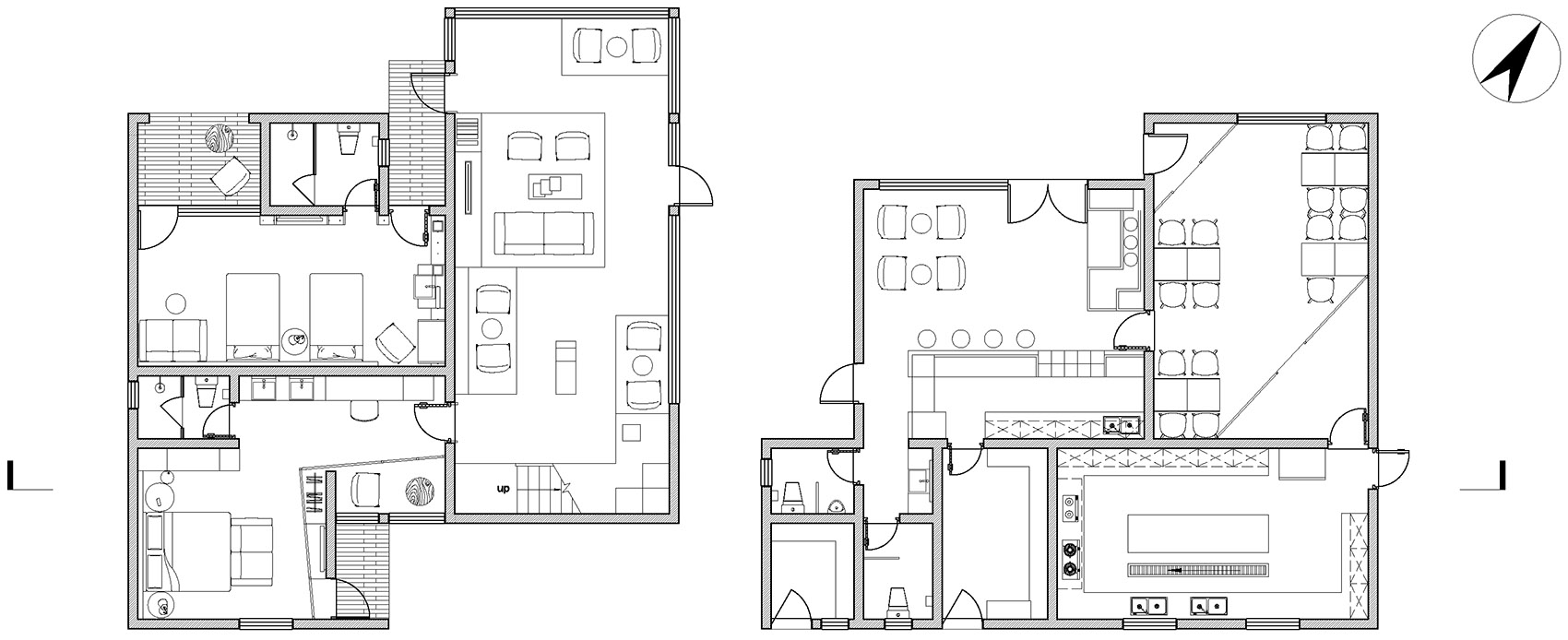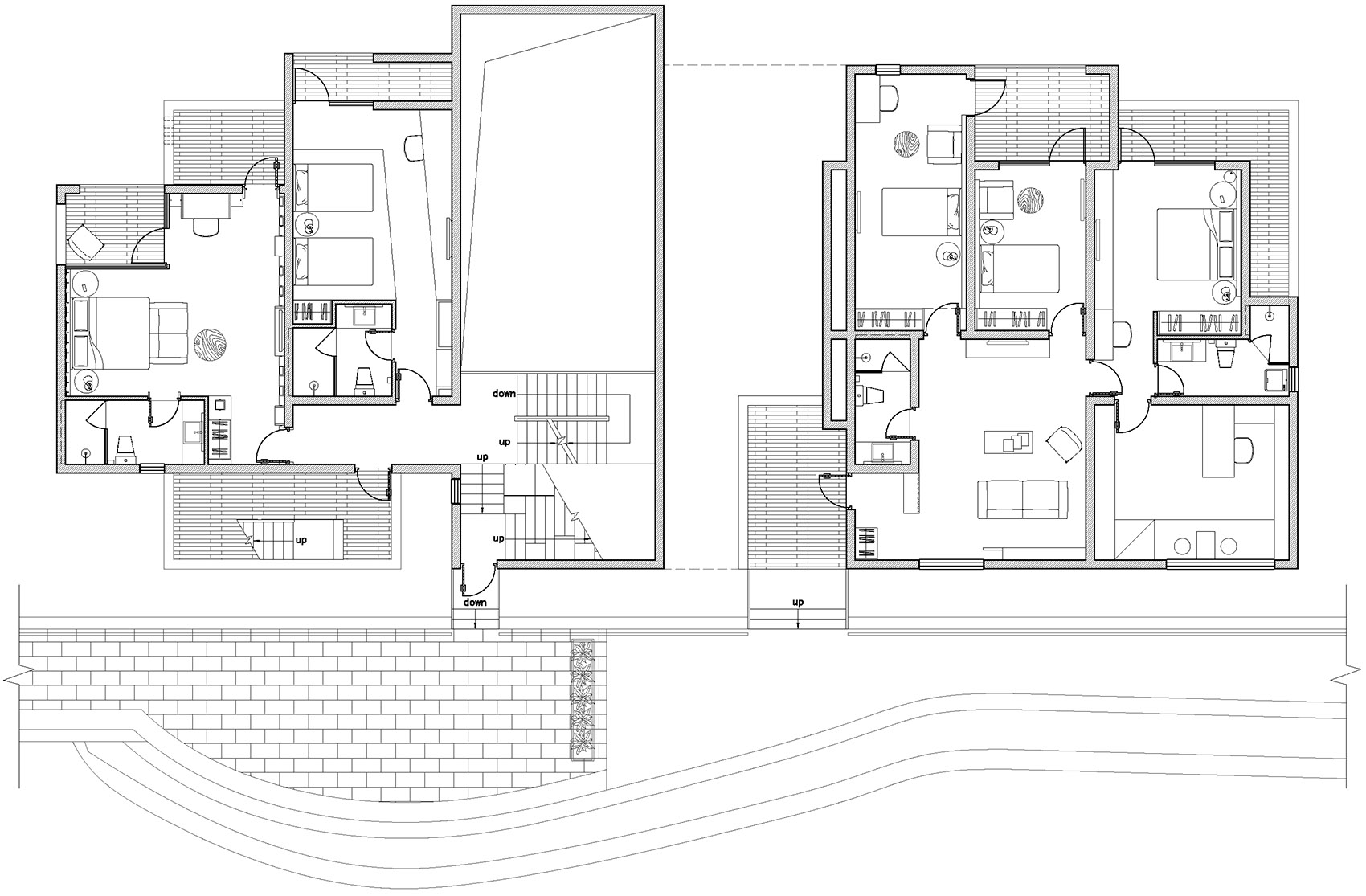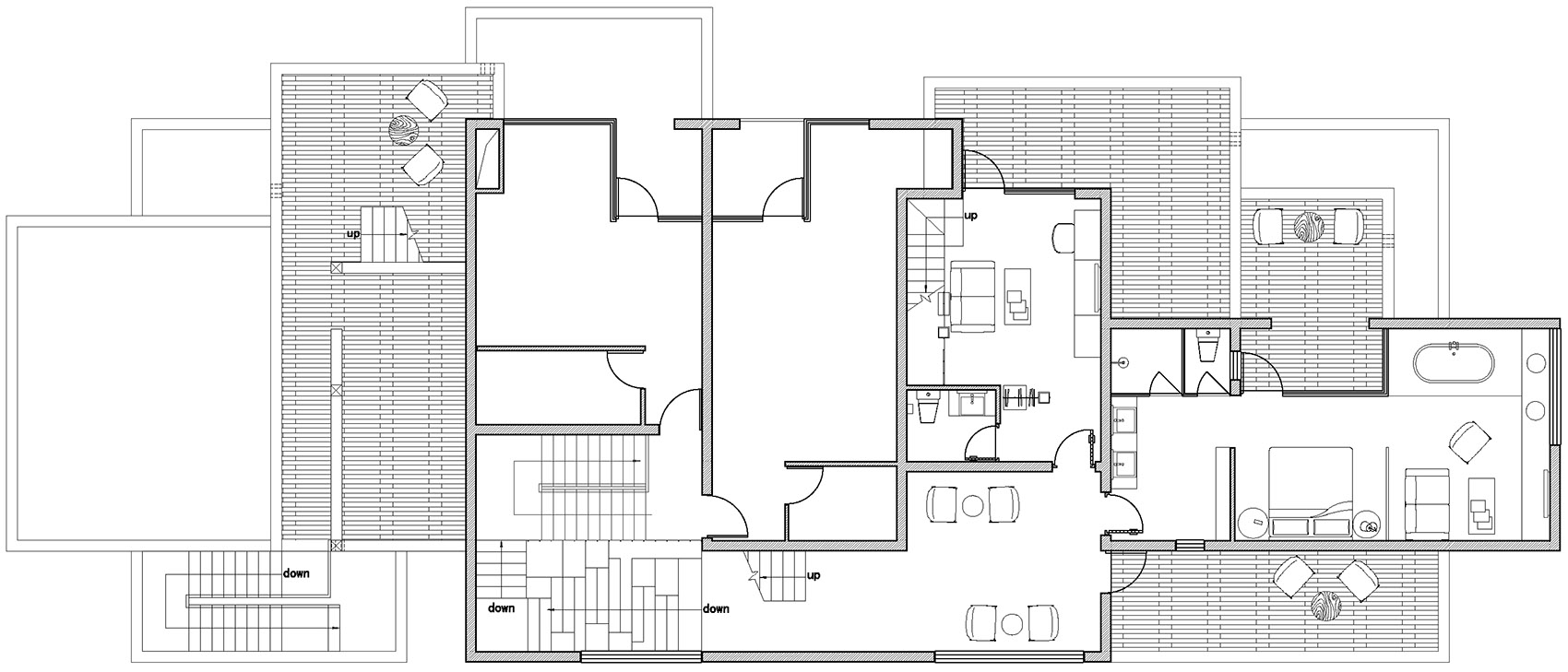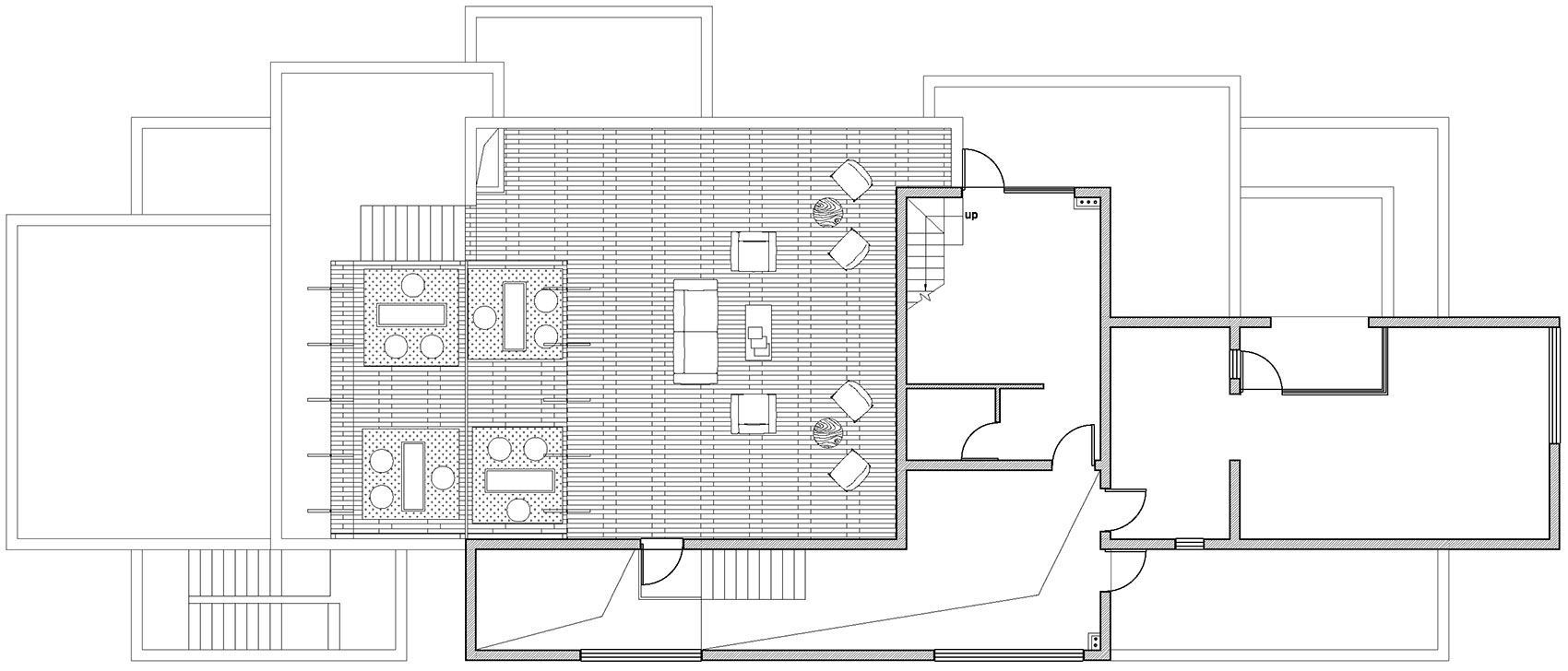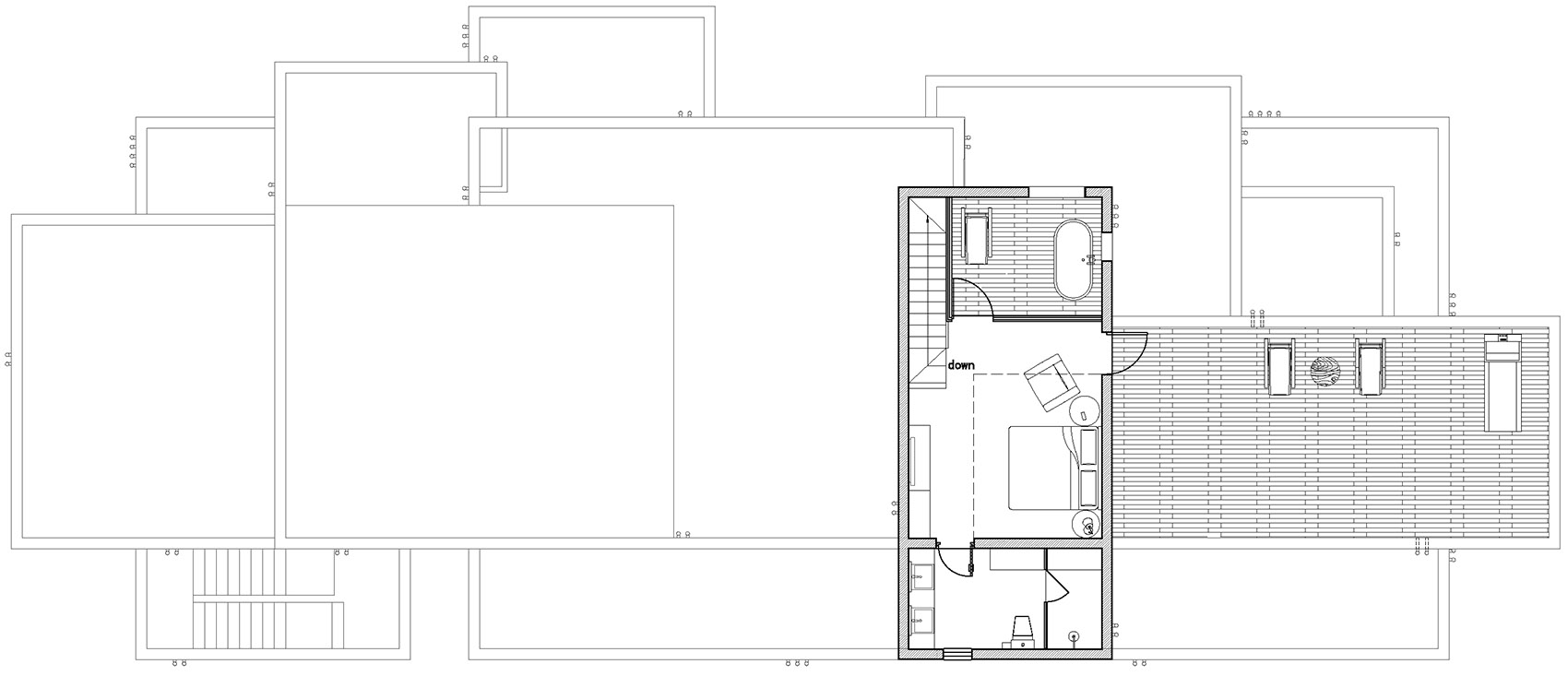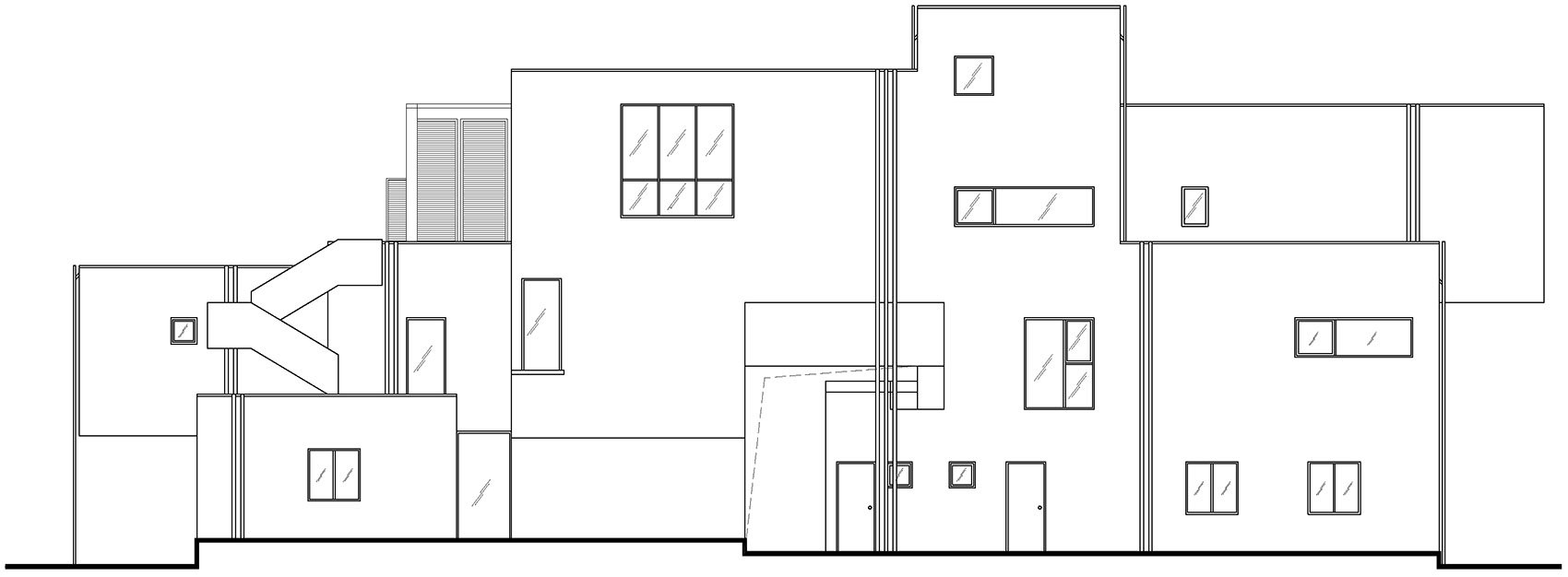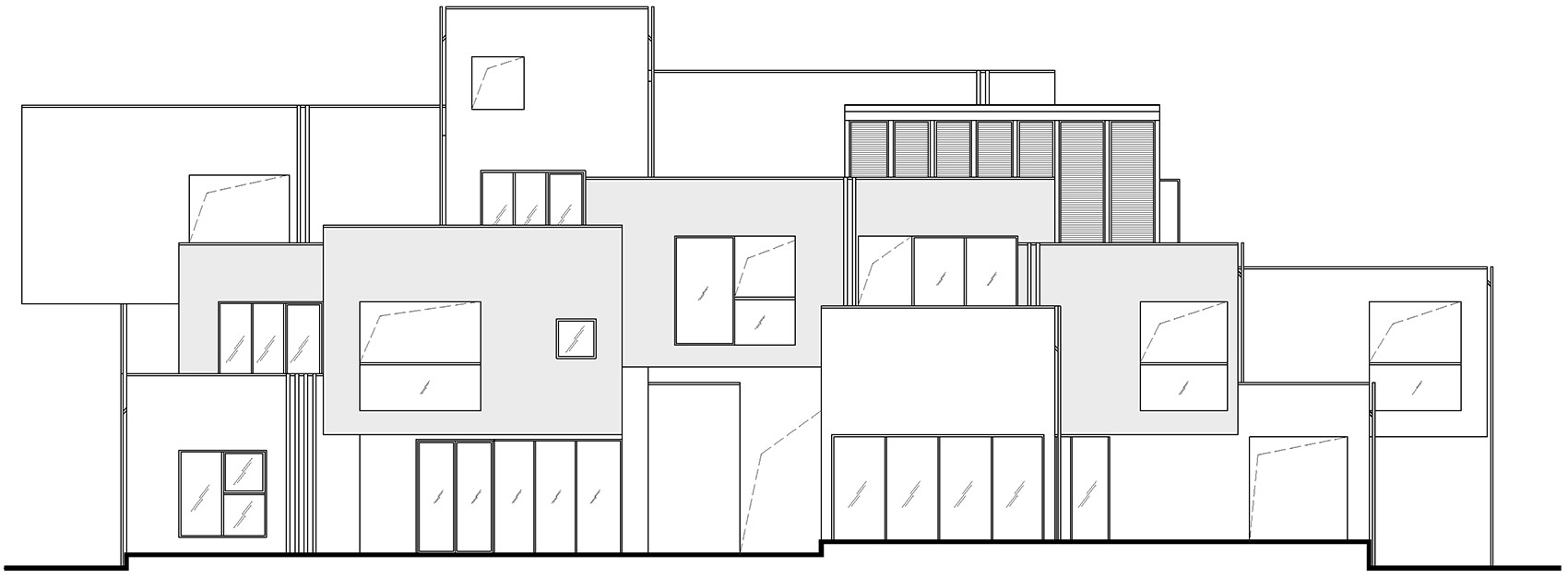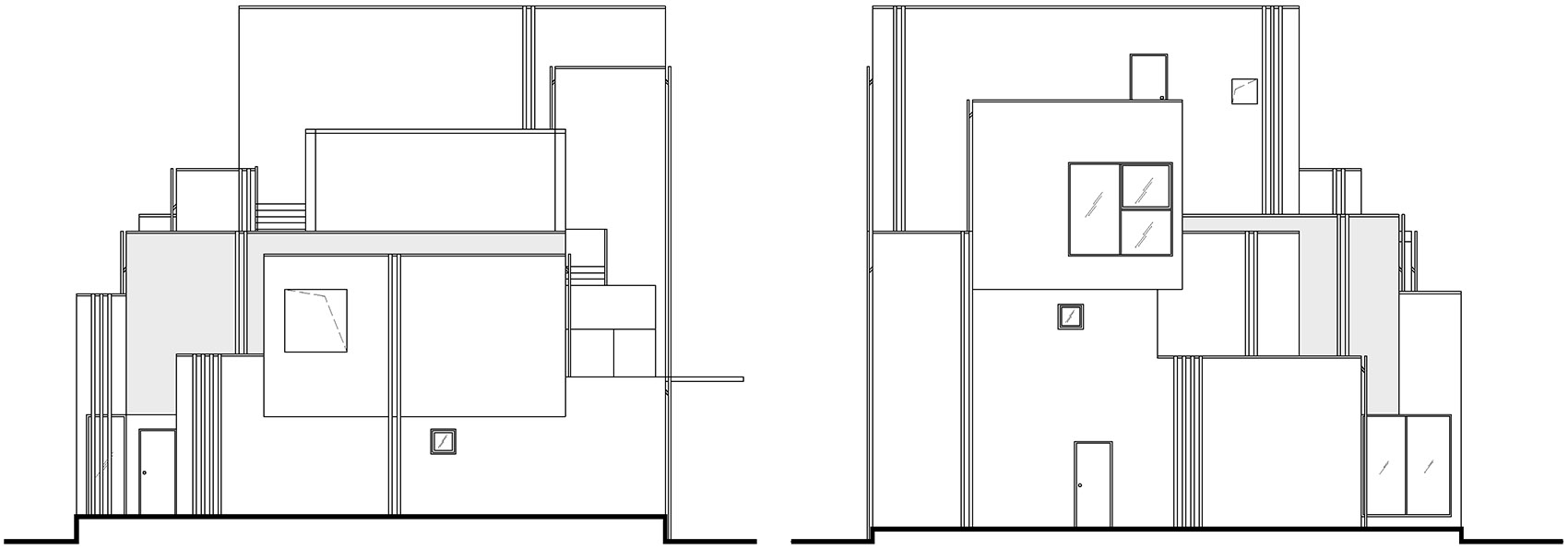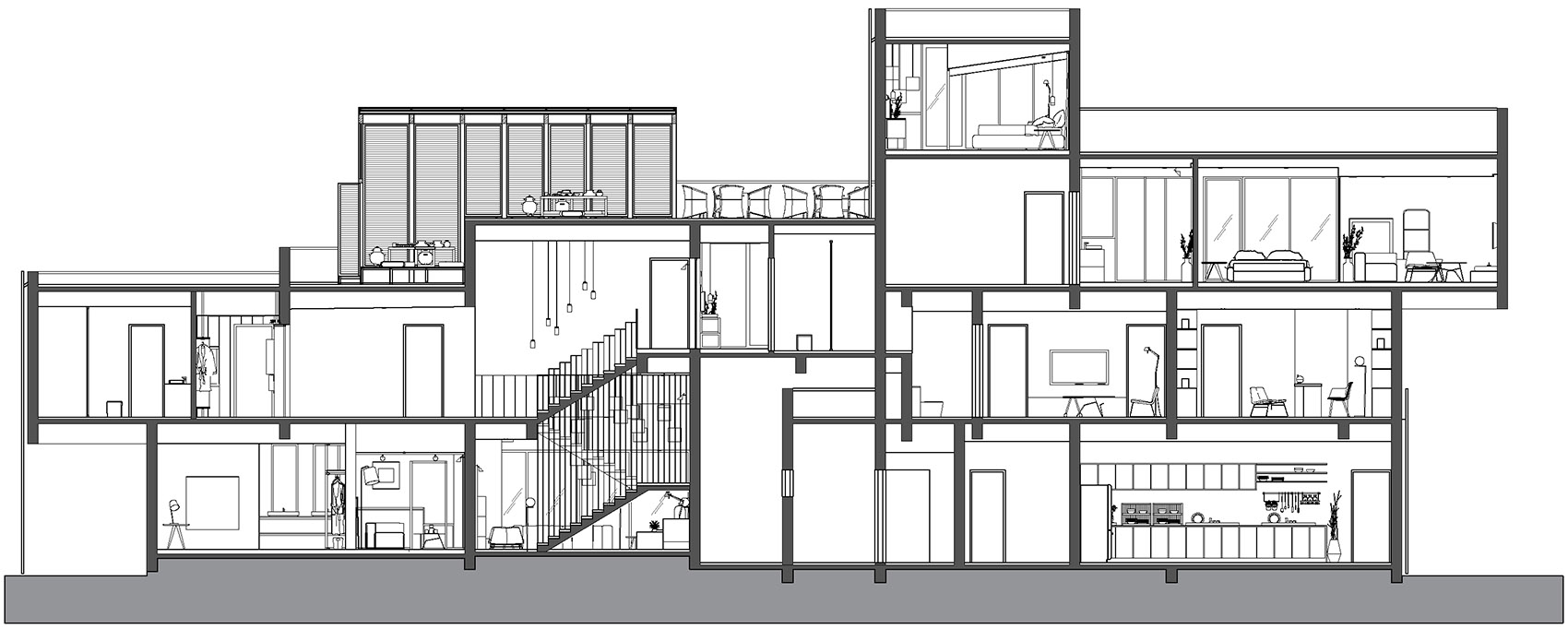基地位于一座长满毛竹的小山脚下。业主在设计介入之前,就已经挖去一块山脚,平整出一块场地用于建房,并用山石挡墙做好围护。
The site is located at the foot of a bamboo covered hill. Before the design intervention, the owner has dug out a mountain foot, leveled out a site for building houses, and made enclosure with rock retaining wall.
▼建筑外观,external view of the project ©唐徐国
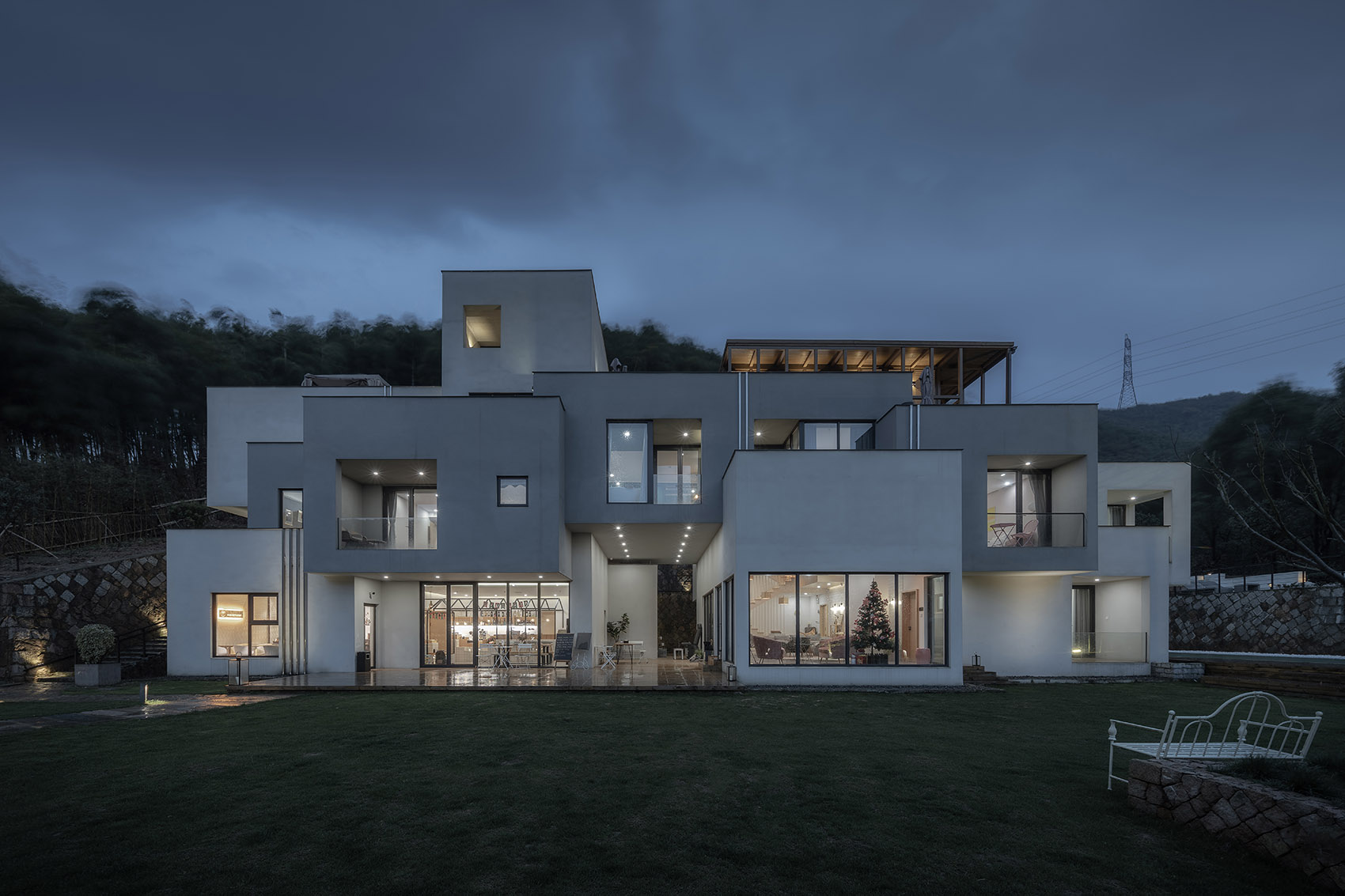
“补山”——是看到这样一个残缺山坡的第一反应,然而补山不仅是补齐被挖去的山脚,而是能建立一座新的山体用以将人的身体放进,以达到兴造的动机。
“Mending the hill”- is the first reaction to see such a incomplete hillside. However, mending the hill is not only to mend the excavated foot of the hill, but also to build a new hill to put the human body in, so as to achieve the motivation of building.
▼鸟瞰图,项目位于山脚,aerial view of the project located at the mountain foot ©唐徐国
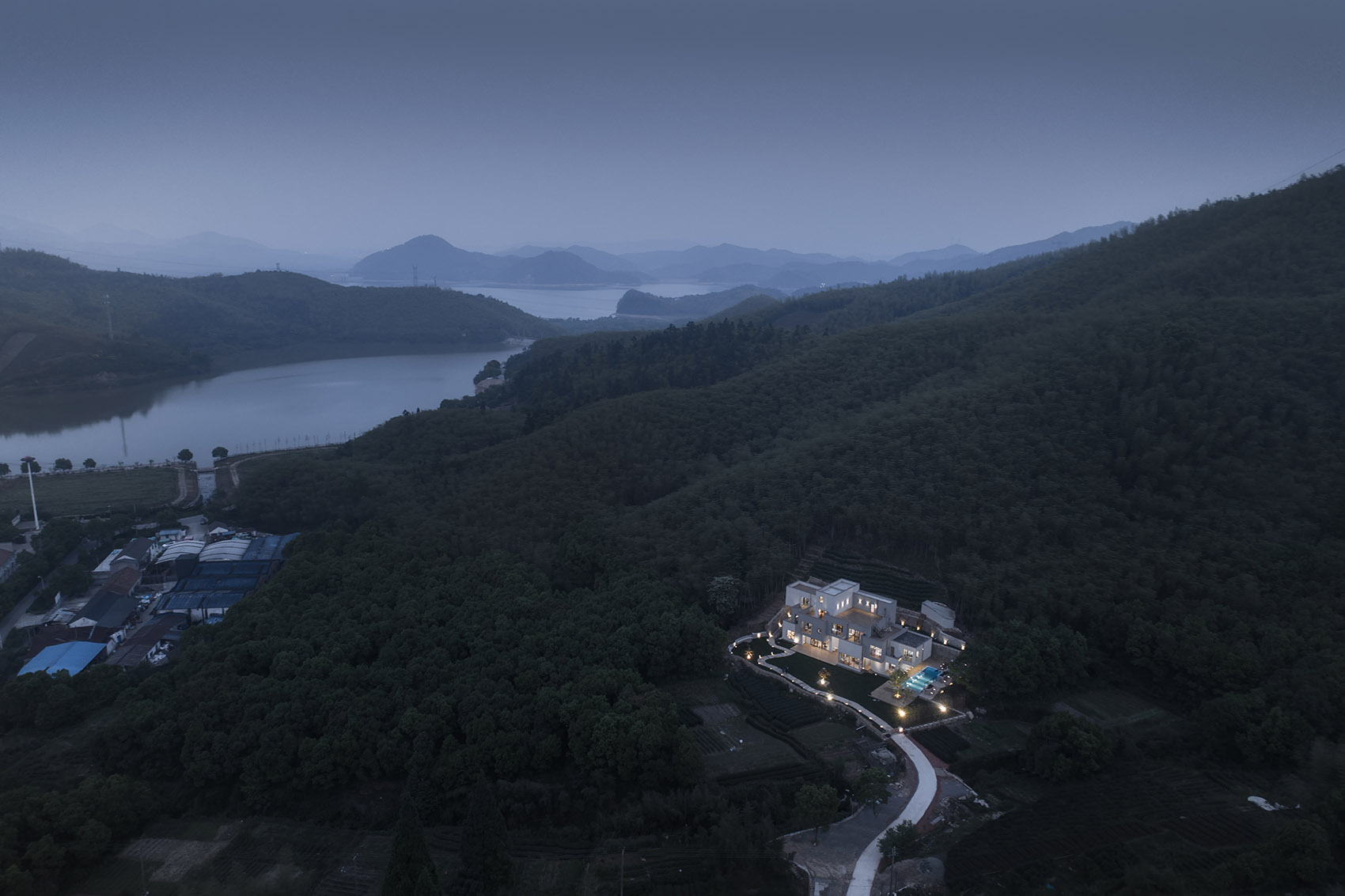
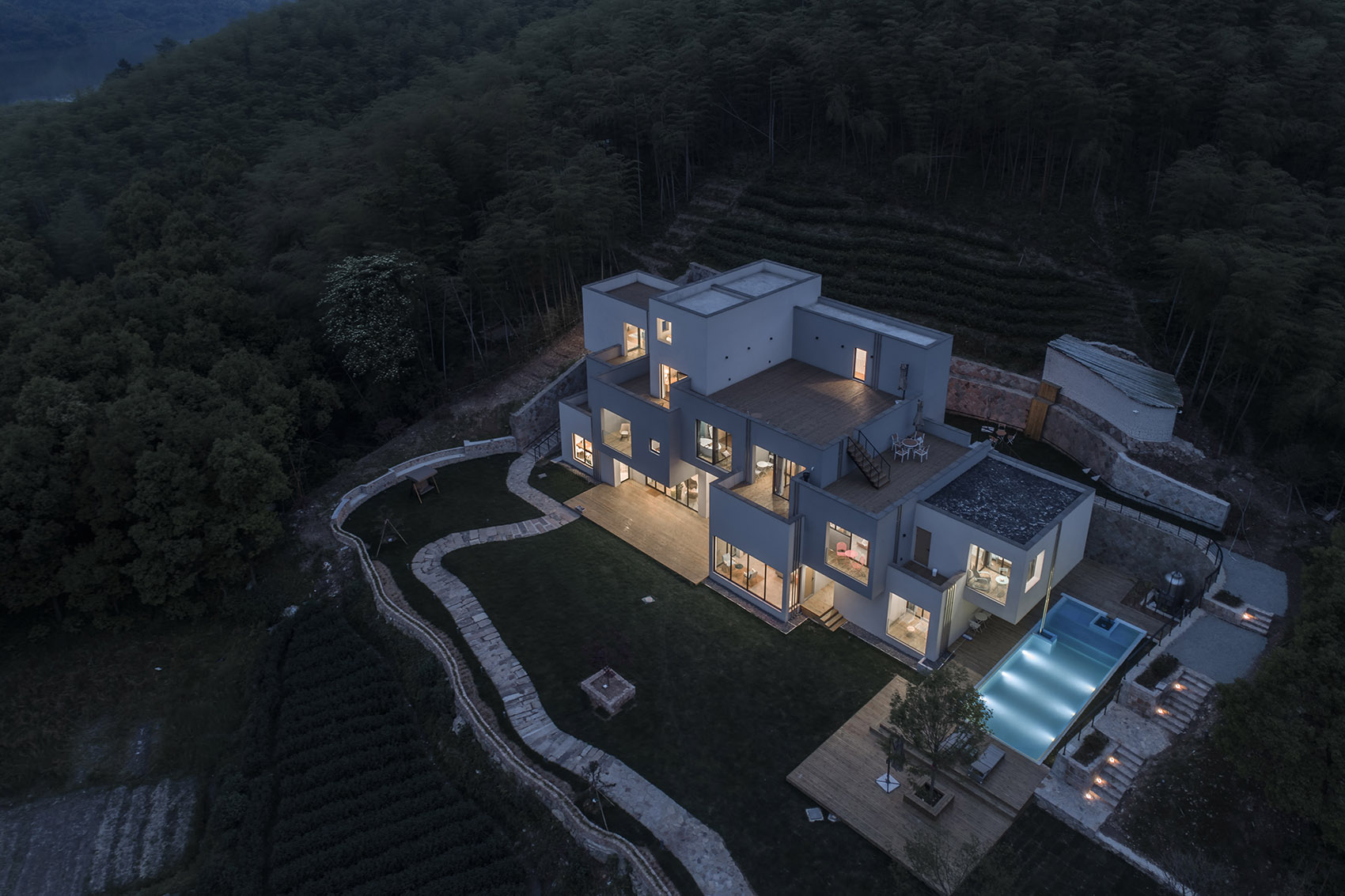
补山的单元采用了当下最易操作的建造单元——空间体量,每一个体量代表一个使用场景,卧室,起居,餐厅,咖啡,娱乐,被悉数堆叠在一起,体量的大小和比例直接由使用功能决定。堆叠产生了露台、架空、出挑,每个空间体量的内与外都有着不同的开敞方式。
The hill mending unit adopts the most easy to operate construction unit at present – space volume. Each volume represents a use scene, bedroom, living room, dining room, coffee, entertainment, which are all stacked together. The size and proportion of the volume are directly determined by the function. Stacking produces terrace, overhead and overhanging, and each space has different ways of opening inside and outside.
▼轴测图,不同单元堆叠出的建筑,axonometric, building created by stacking units ©来建筑
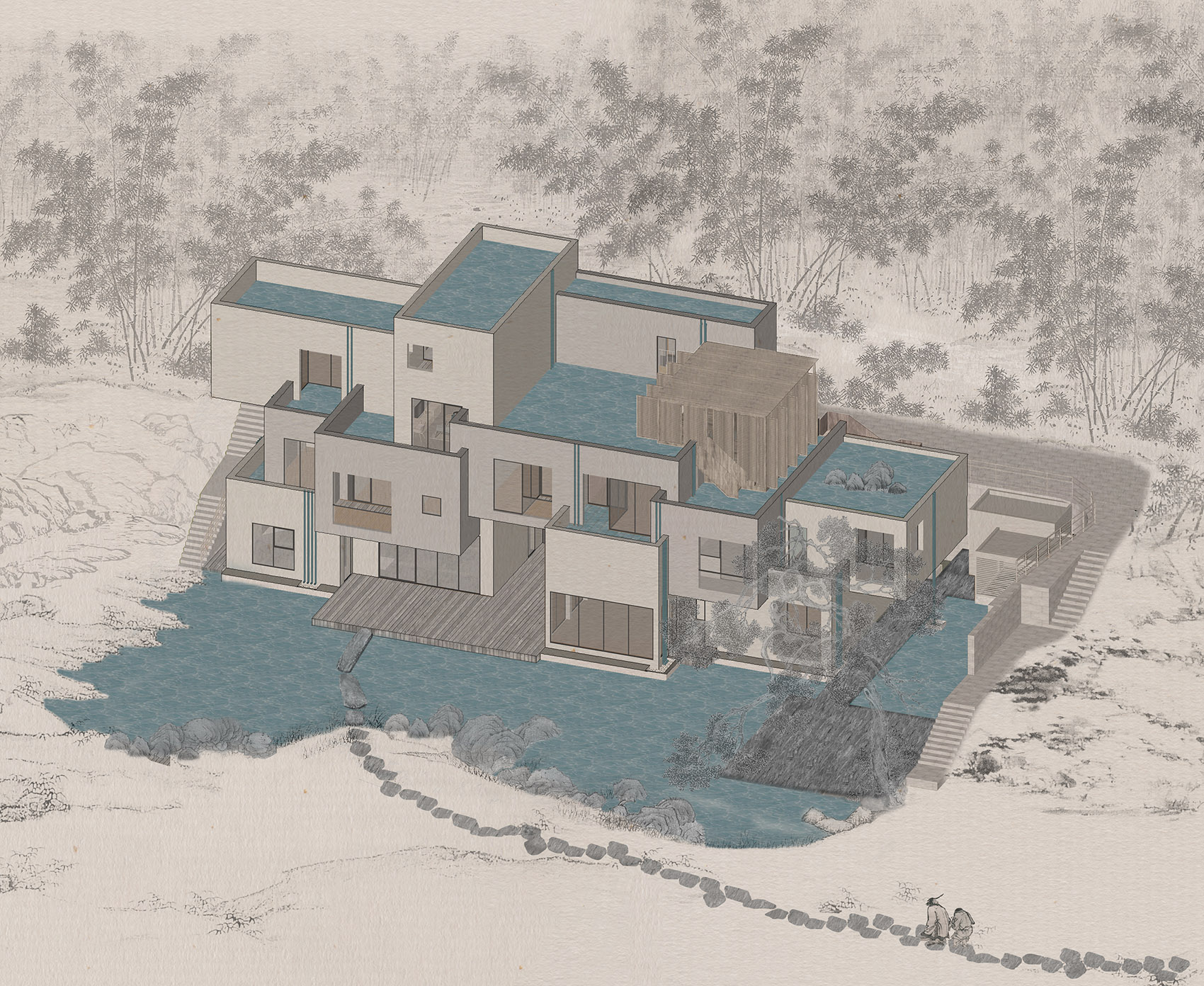
堆叠的空间体量如同置石一般咬合在一起,现代建筑中向上翻起的女儿墙暗示了一种“容器”的形象。屋面排水本是建造系统中重要的一项技术问题,通常被构造设计隐蔽起来。在川房中将落水管有意表露出来,作为一种川流而下的水路的形象。银色的水路,挂在墙壁上,层层跌落,为水平展开的空间容器,增加了一种竖向的动势。形成一种“水满则溢”的想象。
▼建筑外观,堆叠的体量如石块咬合在一起,external view of the building, stacking volumes like stones ©廖启贤
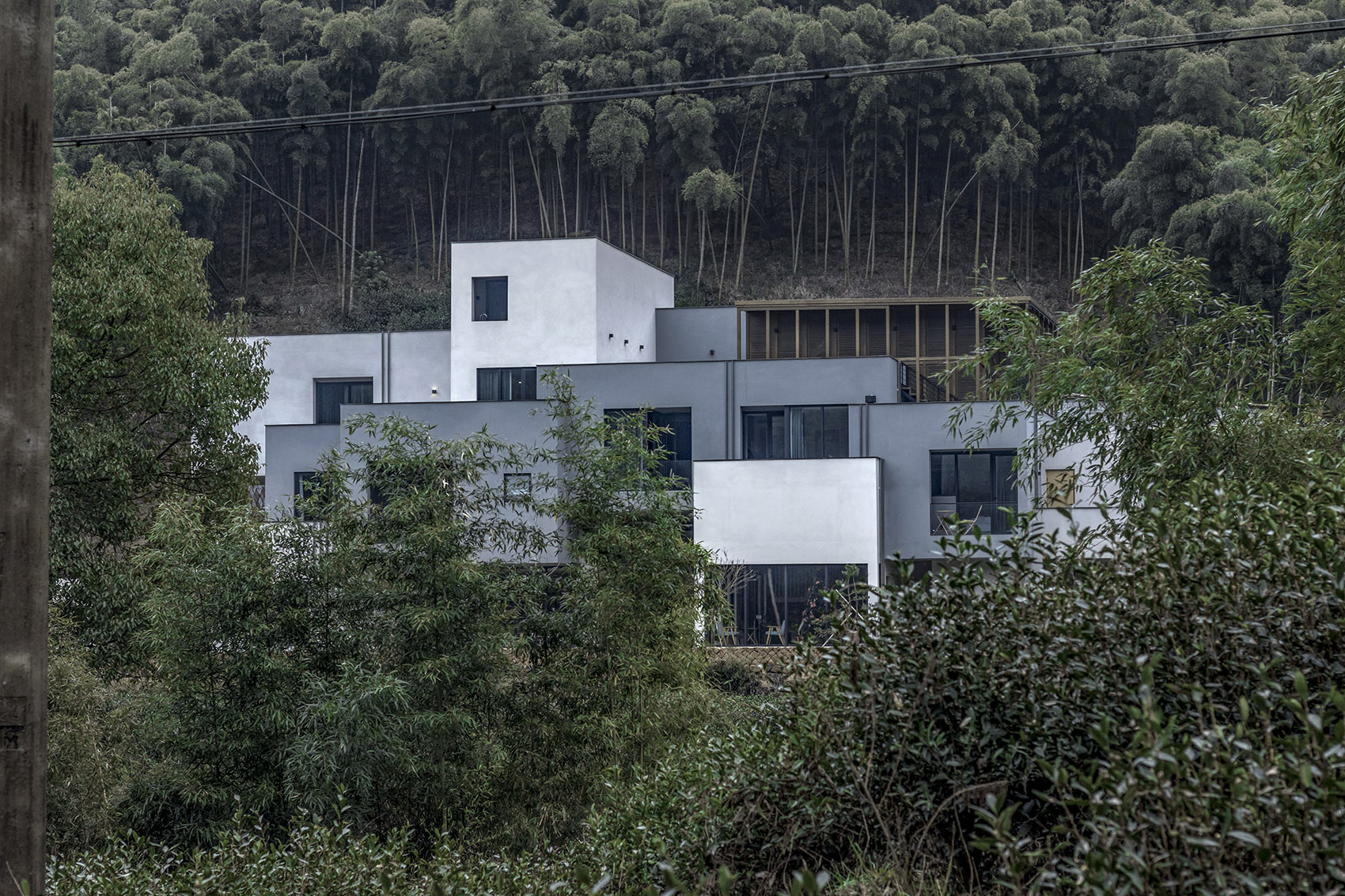
The stacking space volume is like placing stones. The upturned parapet in modern architecture indicates the image of a “container”. Roof drainage is an important technical problem in the construction system, which is usually concealed by the structural design. In the Cubes III, the downpipe is intentionally exposed as an image of the water way flowing down the river. Silver waterways, hanging on the wall, fall layer by layer, adding a vertical momentum to the horizontally expanded space container. Form a kind of imagination that “water overflows when it is full”.
▼建筑外观,一侧为游泳池,external view of the building with a swimming pool on one side ©唐徐国
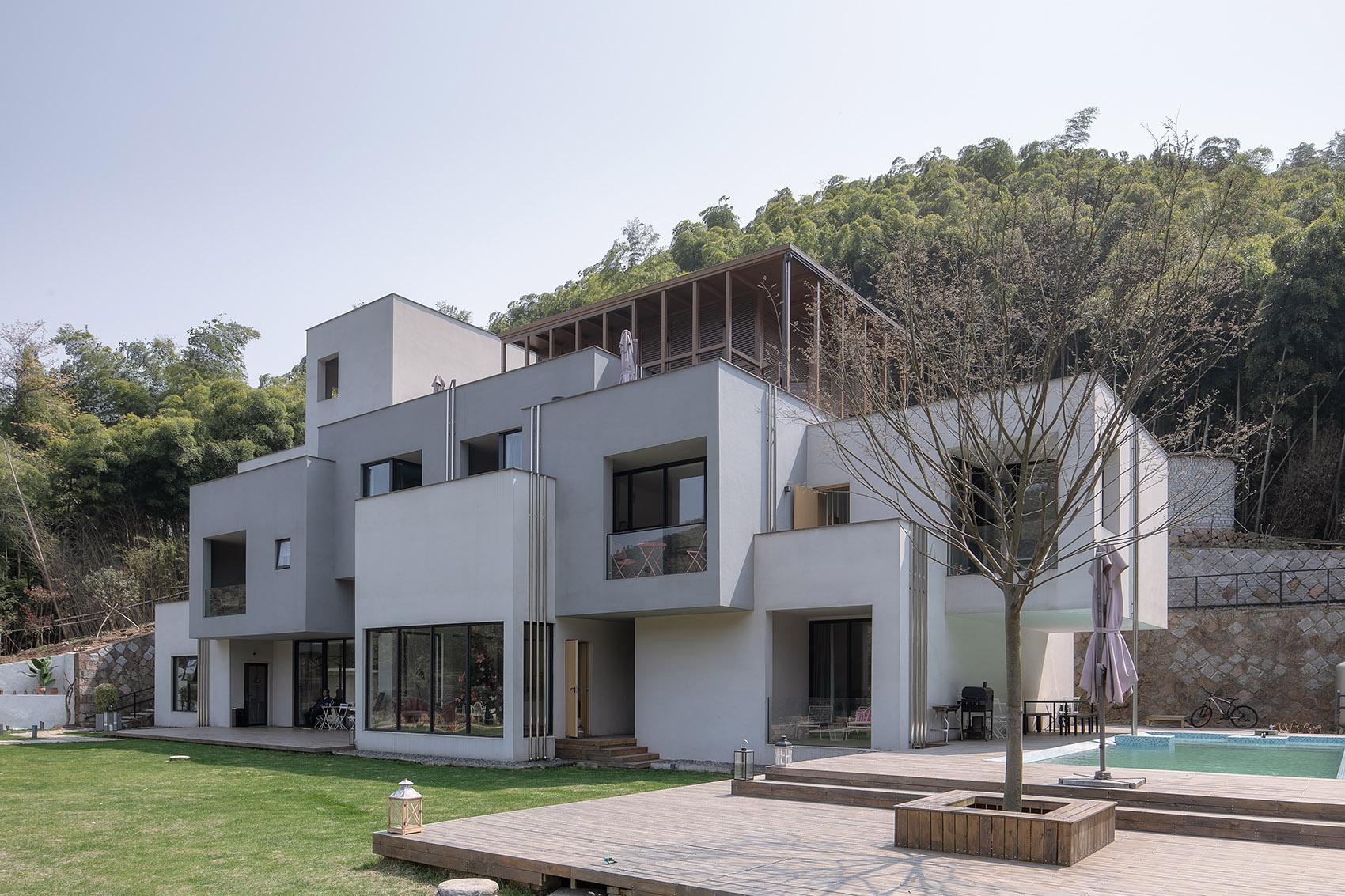
▼银色水管挂在立面上,silver-colored pipes hanging outside the facade ©上:唐徐国,下:唐铭
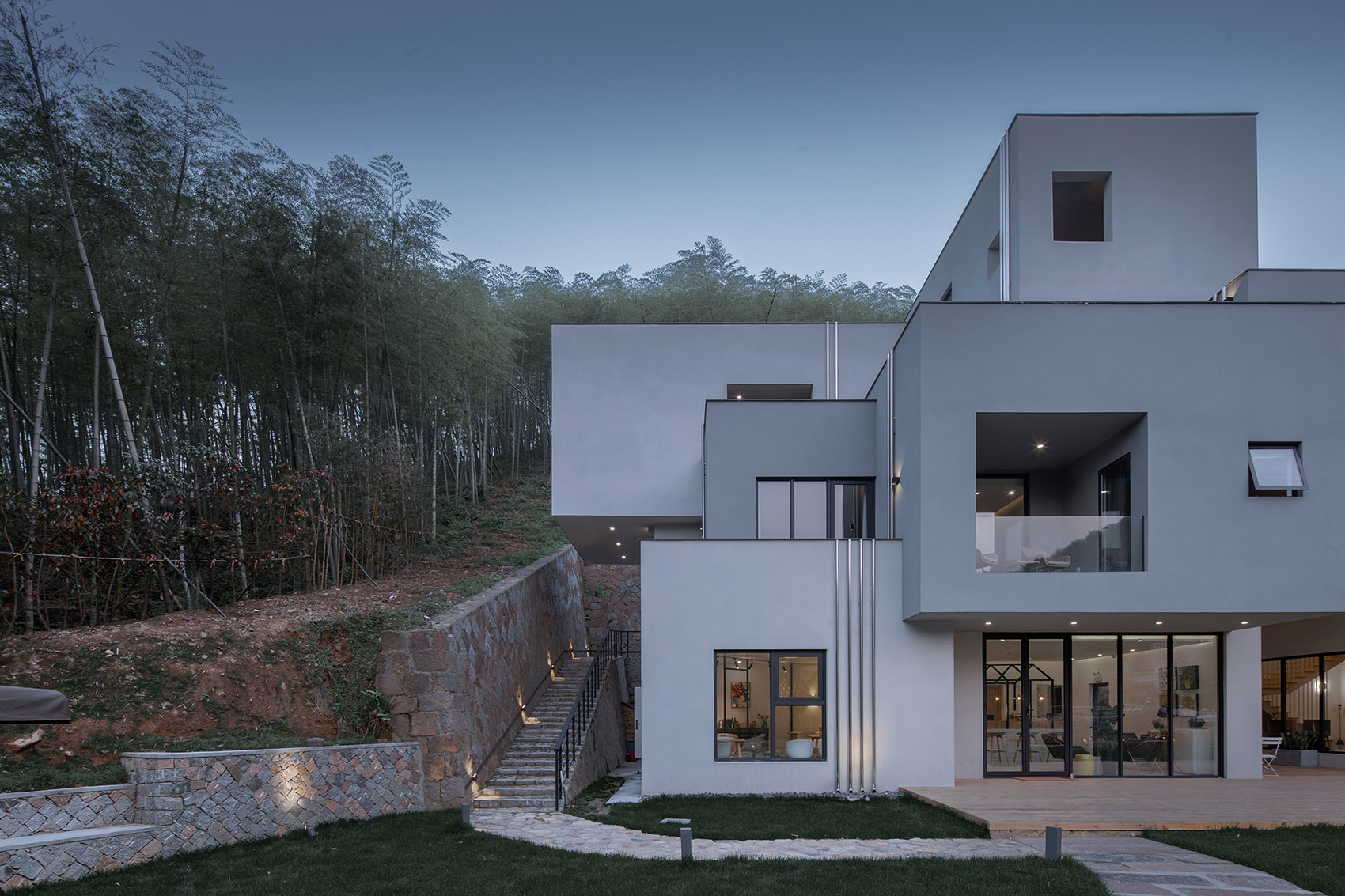

▼水管和立面细部,closer view to the pipes and the facade ©唐铭
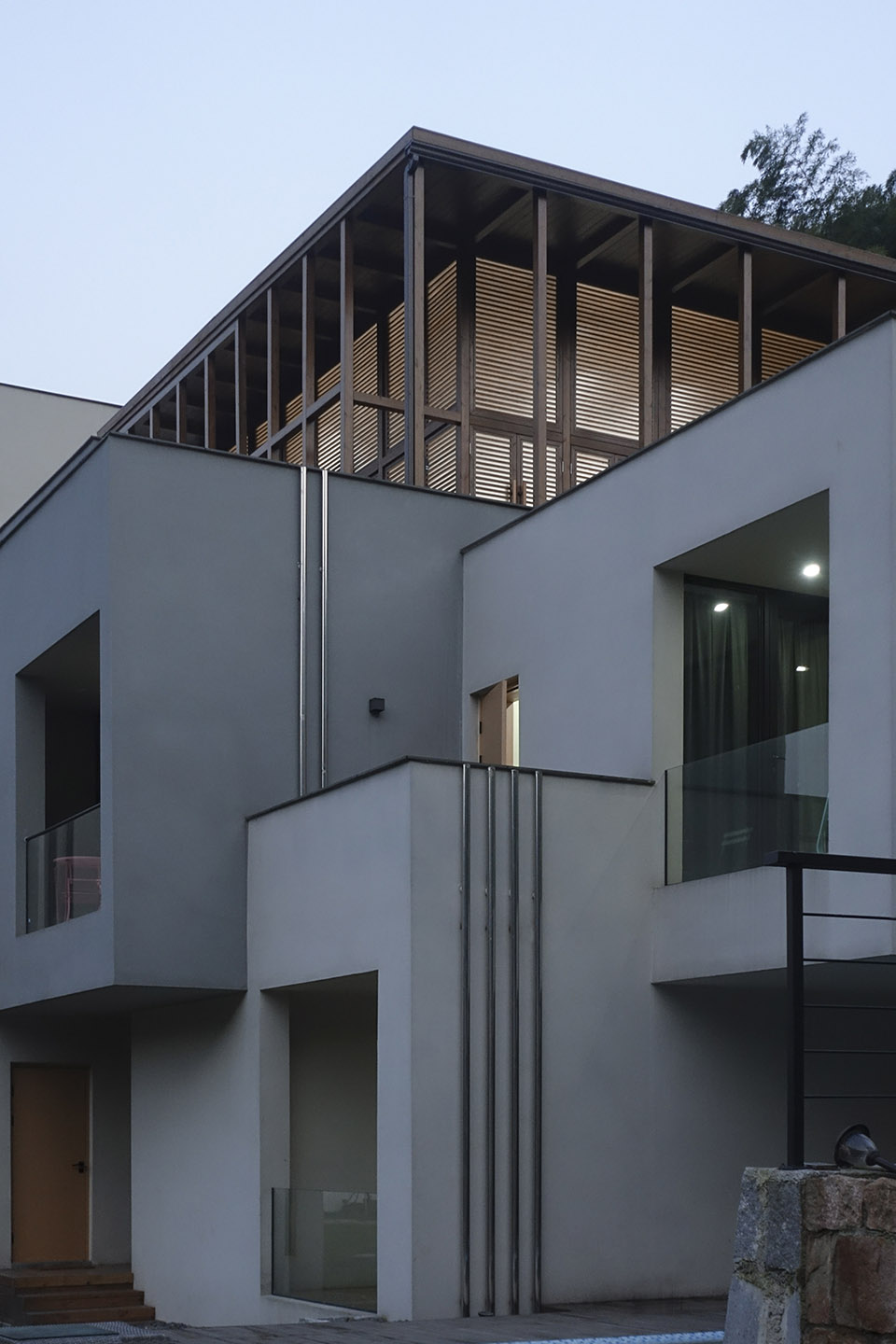
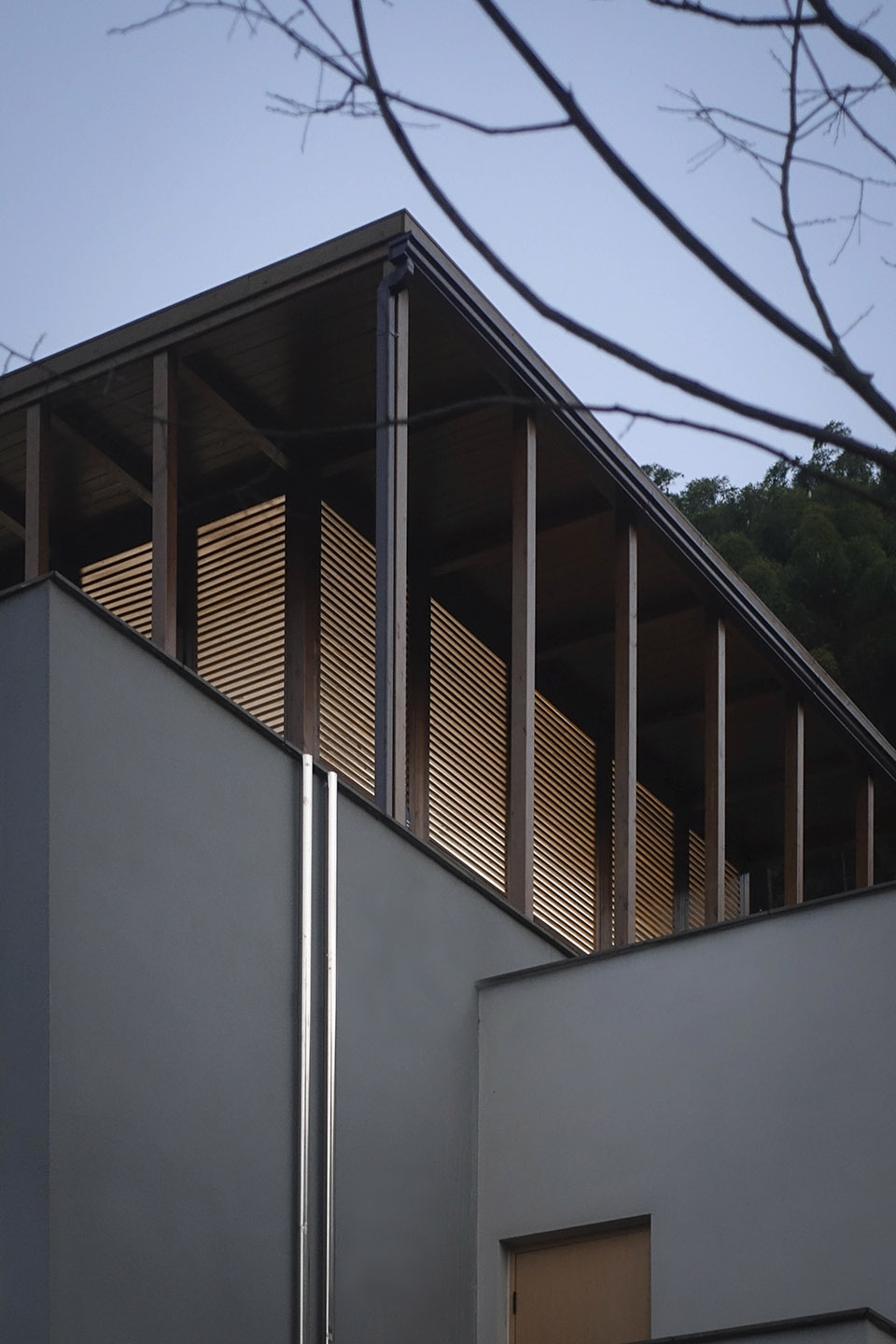
川房,在使用上是一个供当下人短暂居住的“商业”场所,其空间受到使用场景的限制,在形式操作和尺度控制中兼顾诸多因素。最终选择了一种现代主义的形式操作语言,让一种强烈的人造物介入到环境当中。这是“来建筑”工作室对于“如画拟物”的想象落地到实际建造的一次尝试。
Cubes III is a “commercial” place for people to live in for a short time. Its space is limited by the use scene, and many factors are taken into account in form operation and scale control. Finally, we choose a kind of modern formal operation language to let a . This is an attempt of “Atelier Lai” from the imagination of “picturesque objects” to the actual construction.
▼休息区,lounge ©唐徐国
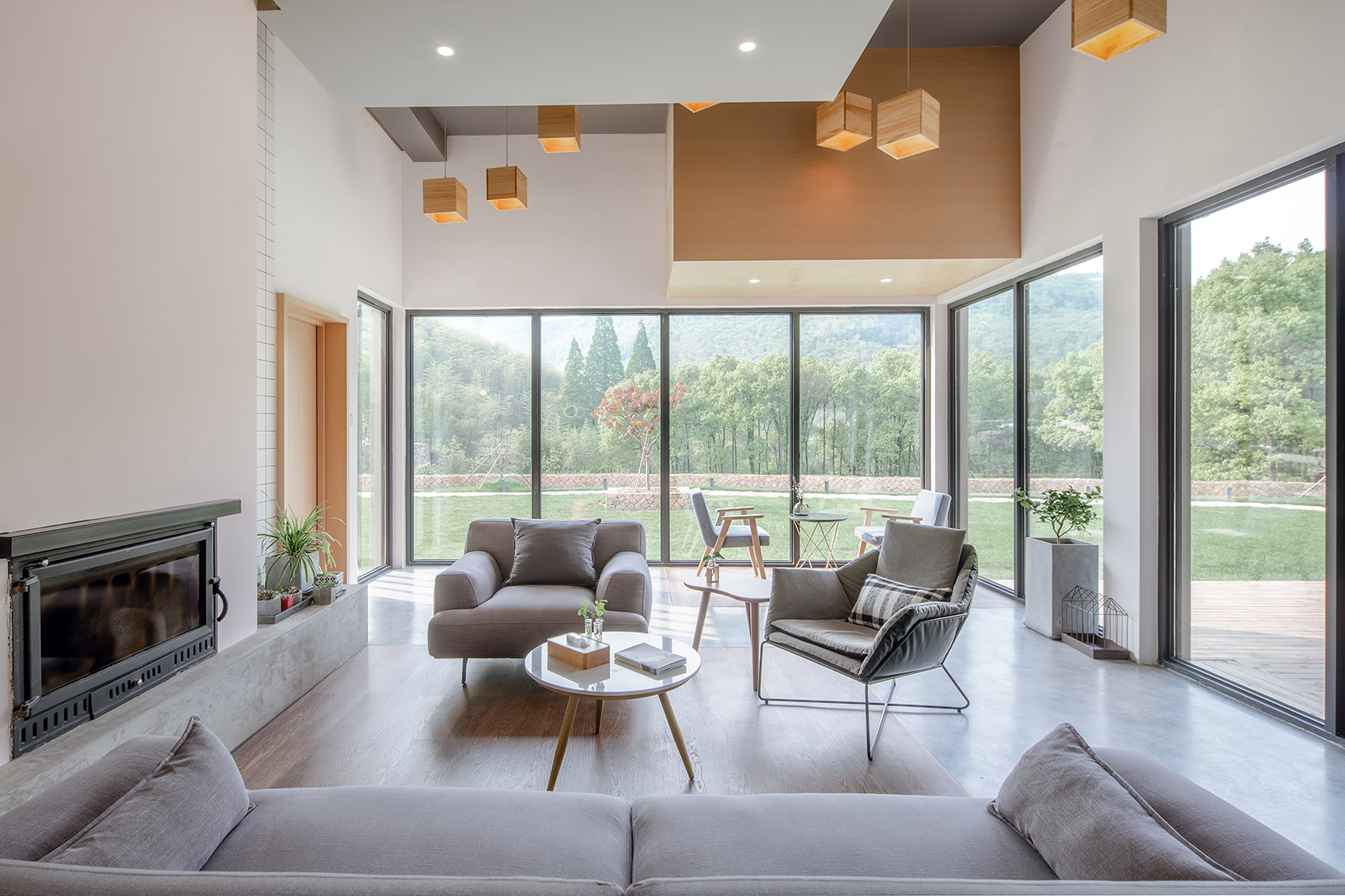
▼客房,guest room ©唐徐国
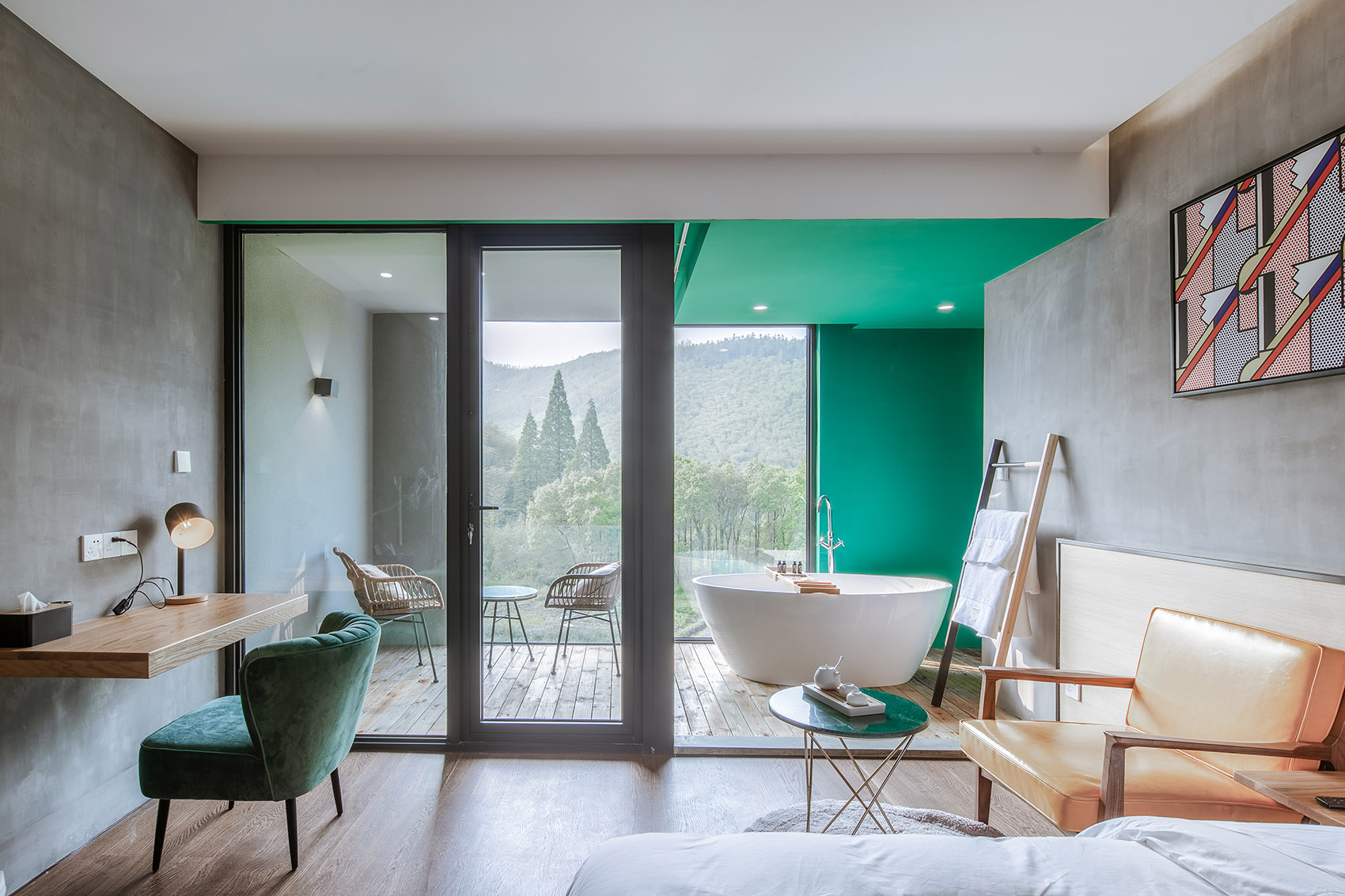
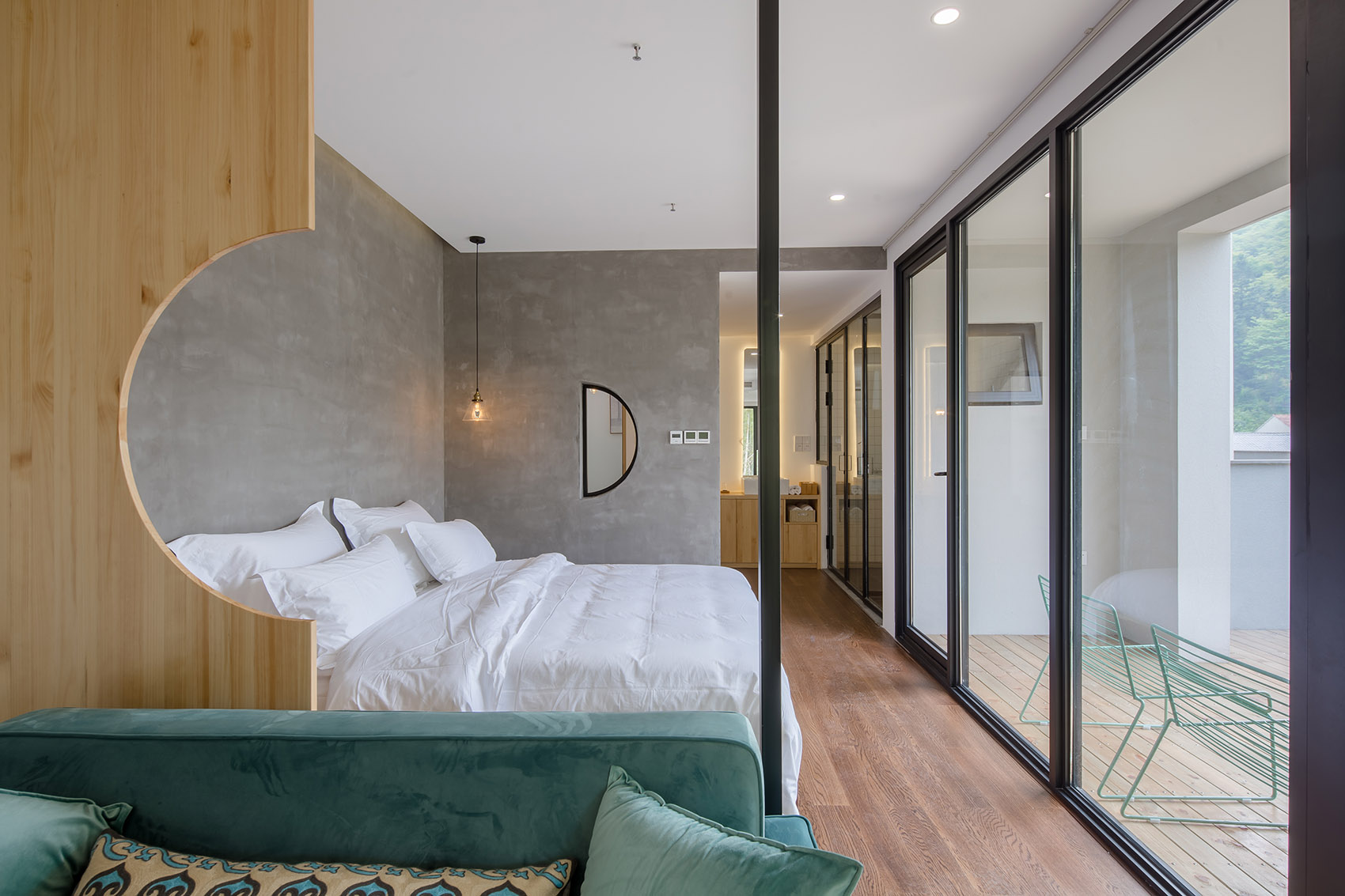
▼楼梯,stair ©唐徐国
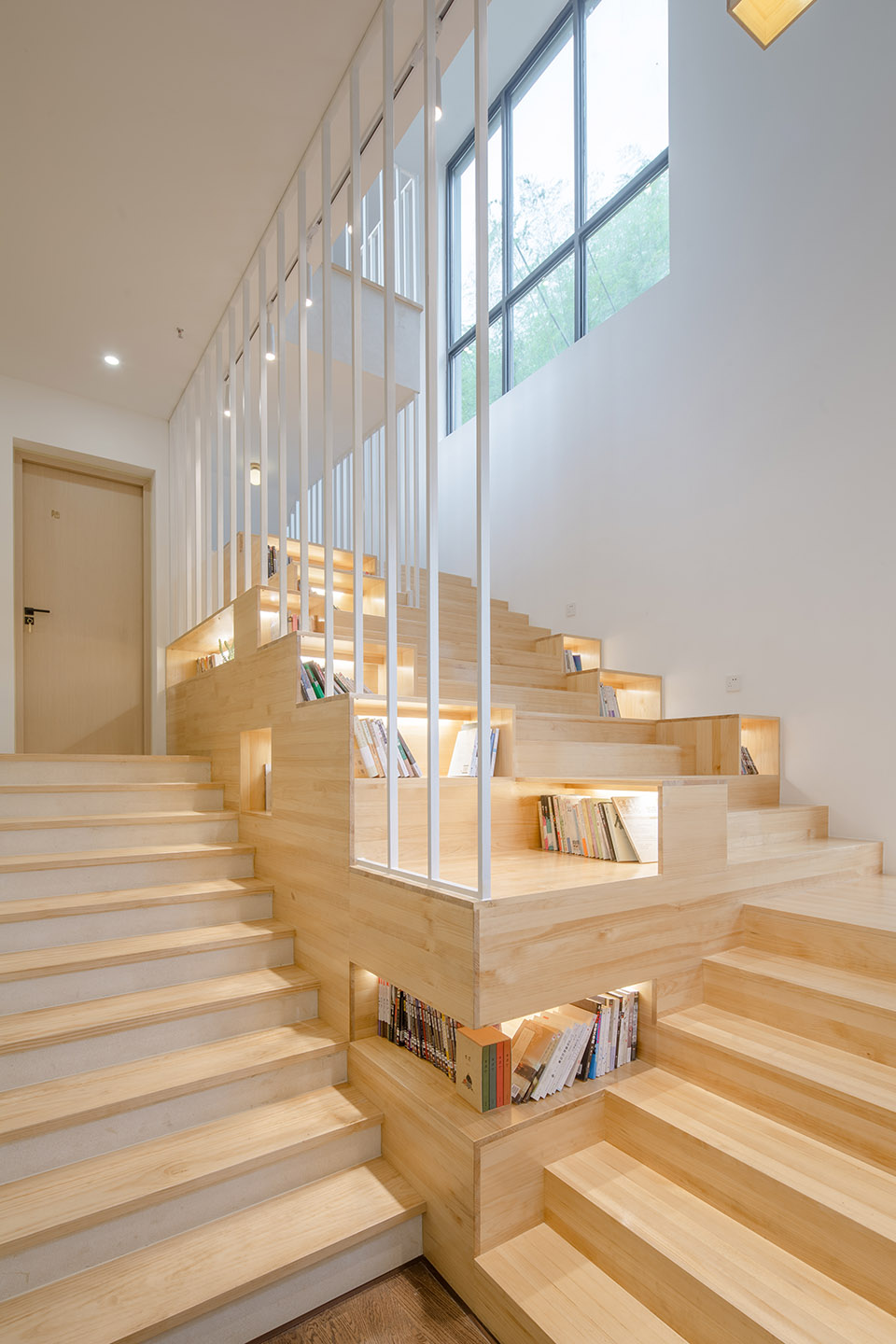
▼总平面图,site plan ©来建筑
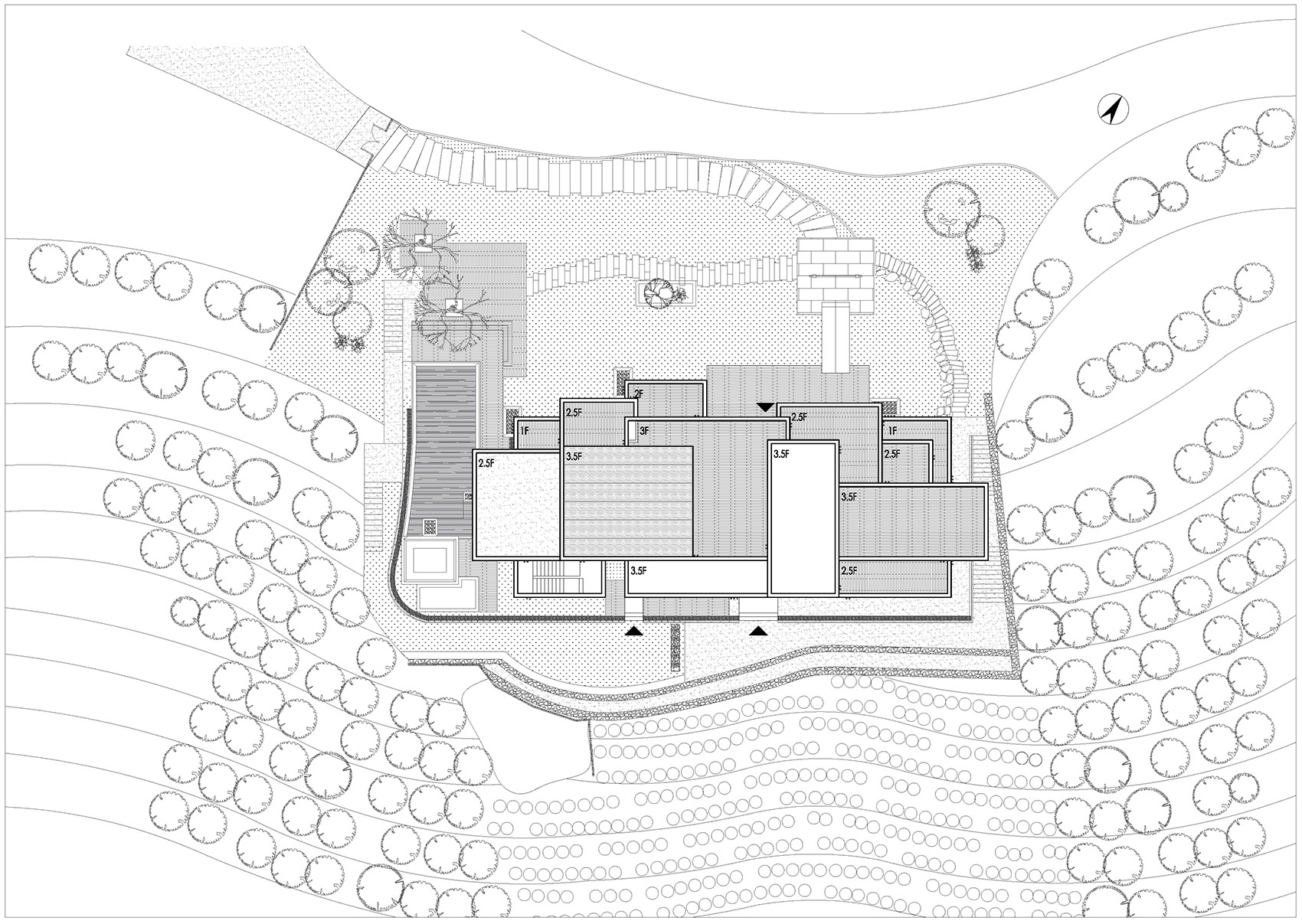
▼一层平面图,first floor plan ©来建筑

▼二层平面图,second floor plan ©来建筑
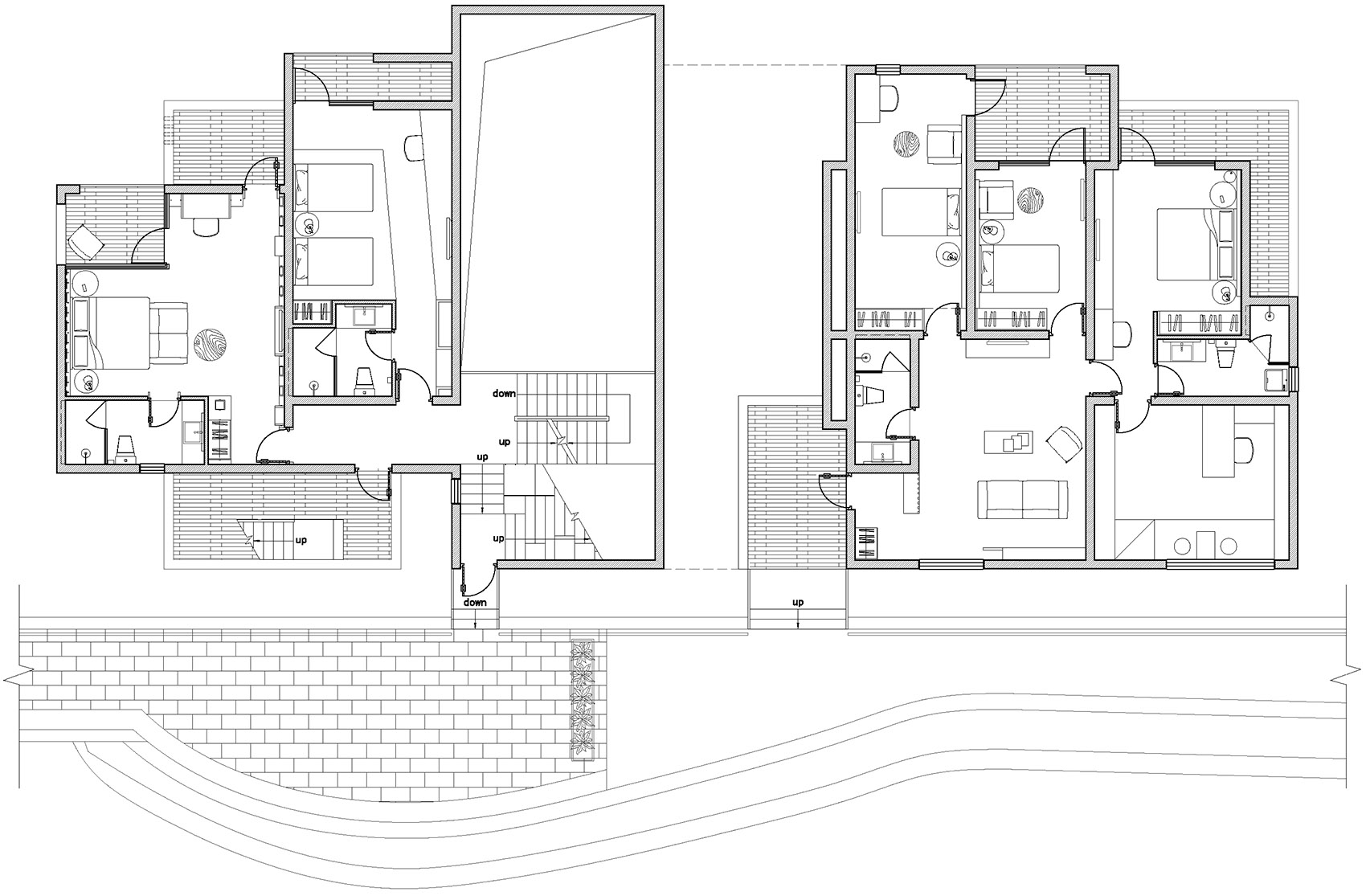
▼三层平面图,third floor plan ©来建筑
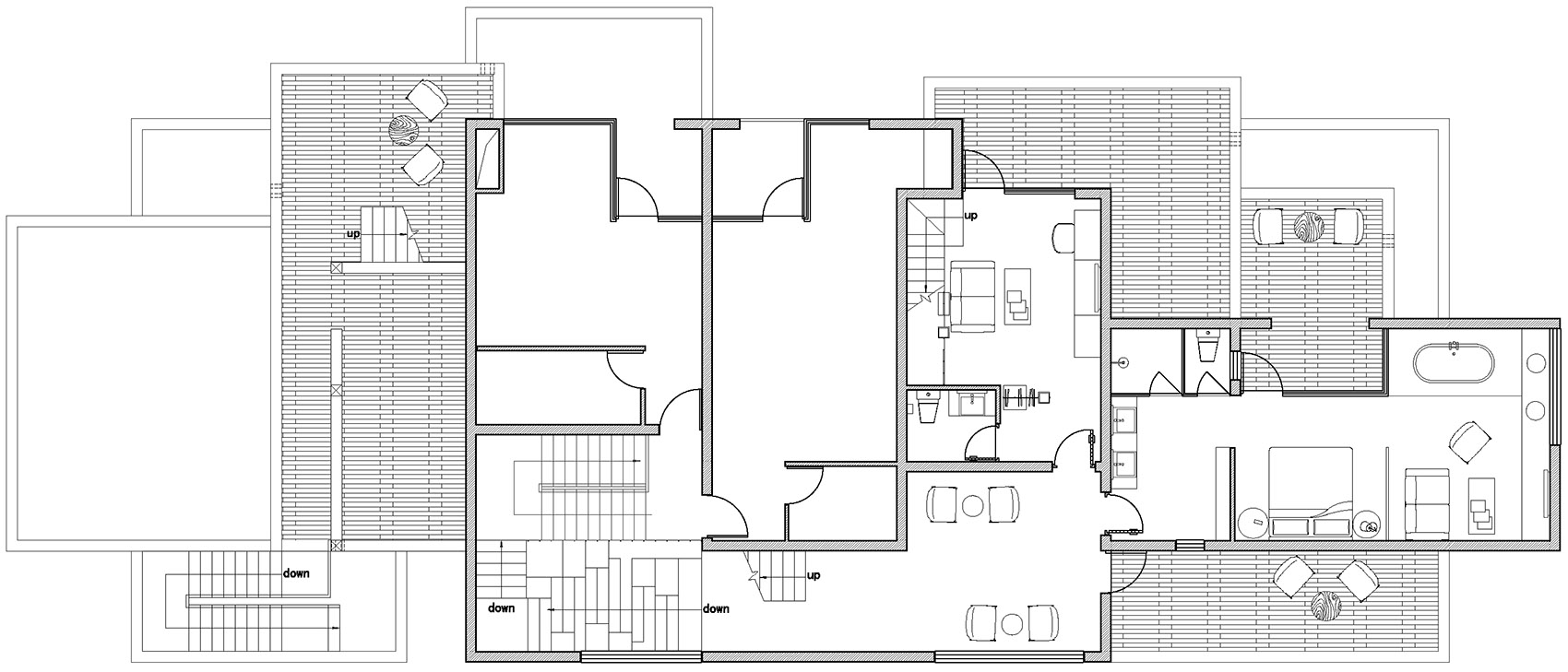
▼立面图,elevations ©来建筑
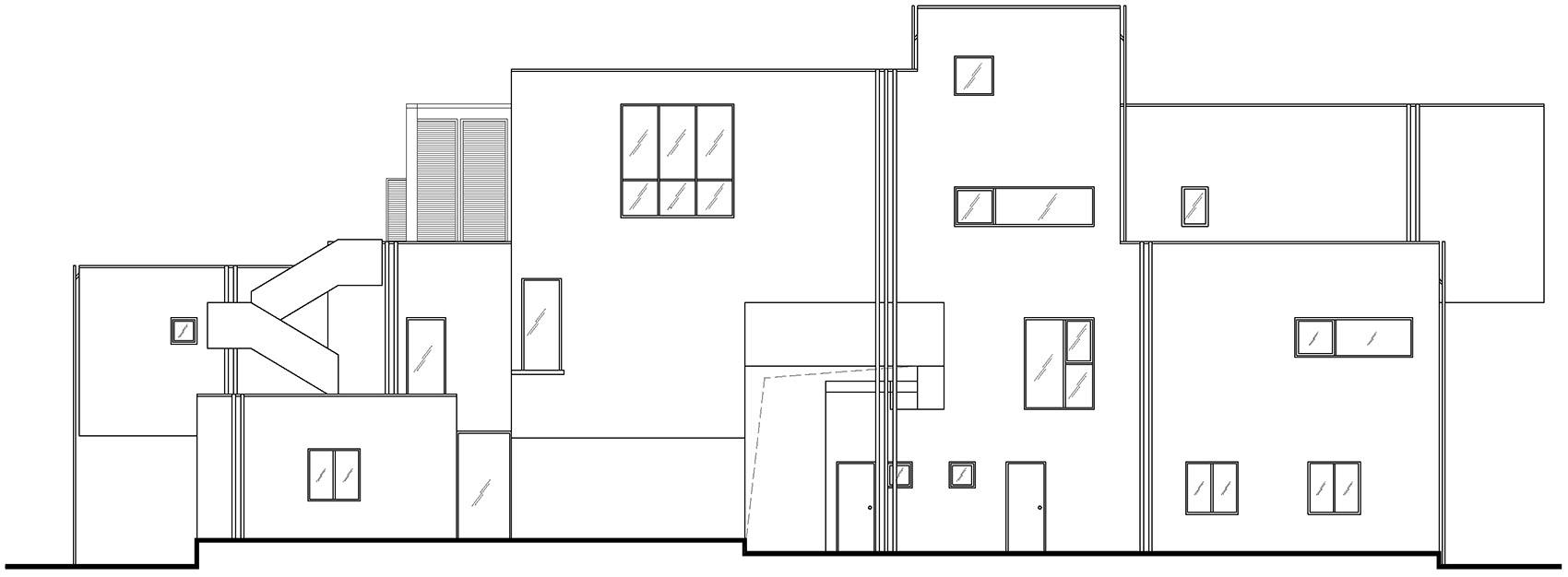
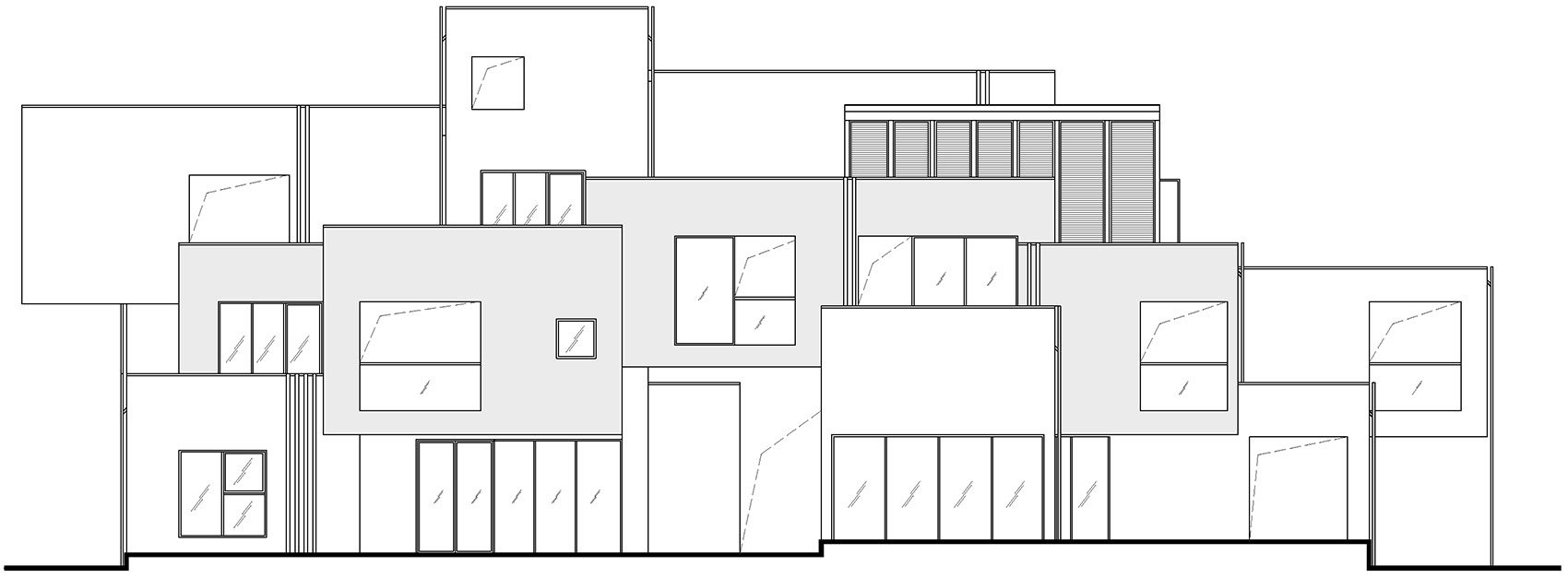
▼剖面图,sections ©来建筑
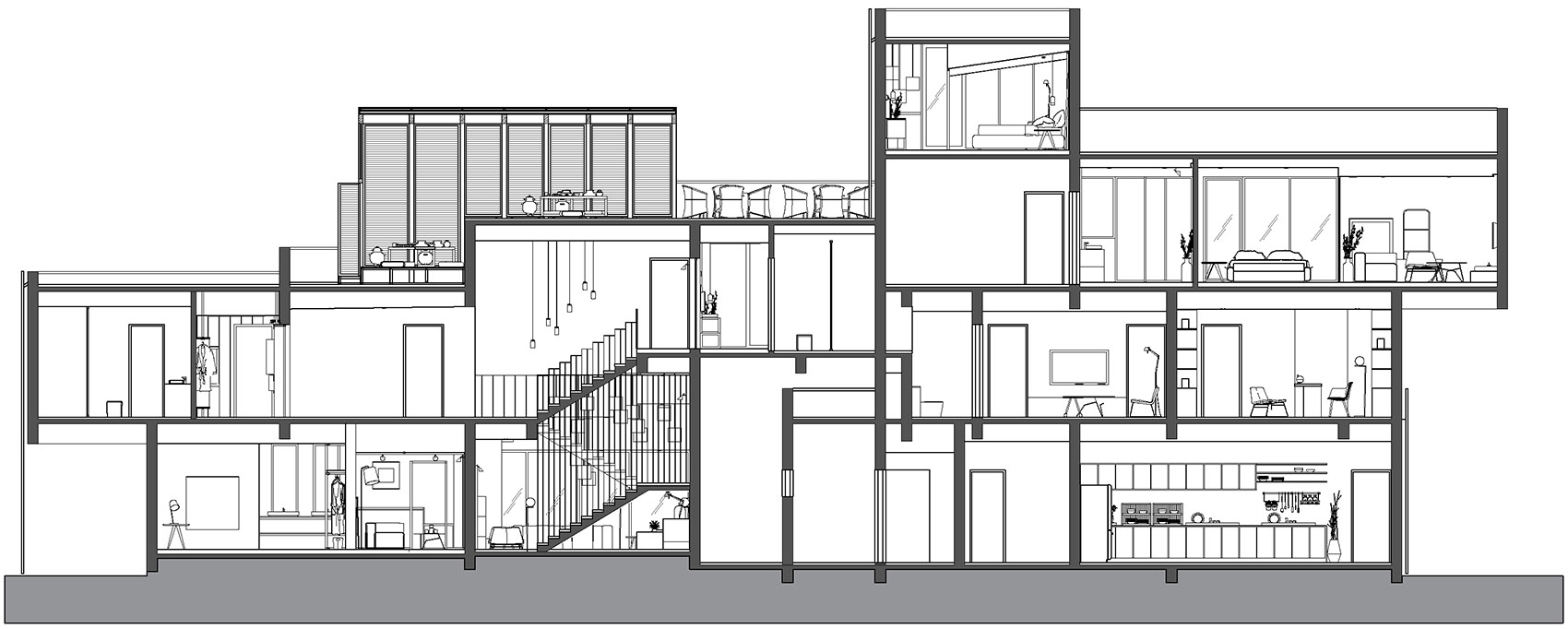
业主:壹所设计精品民宿 设计方:来建筑设计工作室 项目类型:民宿酒店 地理位置:浙江省,湖州市,吴兴区,南坞村 主持建筑师:马科元 结构工程师:王伟 设计团队:谢佳辰,张梦婷,陈运,张晶 摄影:唐徐国、廖启贤、唐铭 结构:钢筋混凝土框架结构 用地面积:300 m² 建筑面积:811 m² 设计周期:2016年1月-2016年12月 建设周期:2016年6月-2018年5月
Client: Yisuo Design Boutique Hostel Mount Mogan Architects: Atelier LAI Topology: B&B Location: Nanwu, Wuxing, Huzhou, Zhejiang Province, China Architect in charge: Keyuan Ma Structural Engineer: Wei Wang Design Team: Jiachen Xie, Mengting Zhang, Yun Chen, Jing Zhang Photographs: Xuguo Tang, Qixian Liao, Ming Tang Structural System: reinforced concrete frame Site Area: 300m² Floor Area: 811m² Design Period: 2016.01-2016.12 Construction Period: 2015.6-2016.12
